

Ultimate Guide To Visiting The Smithsonian Tips
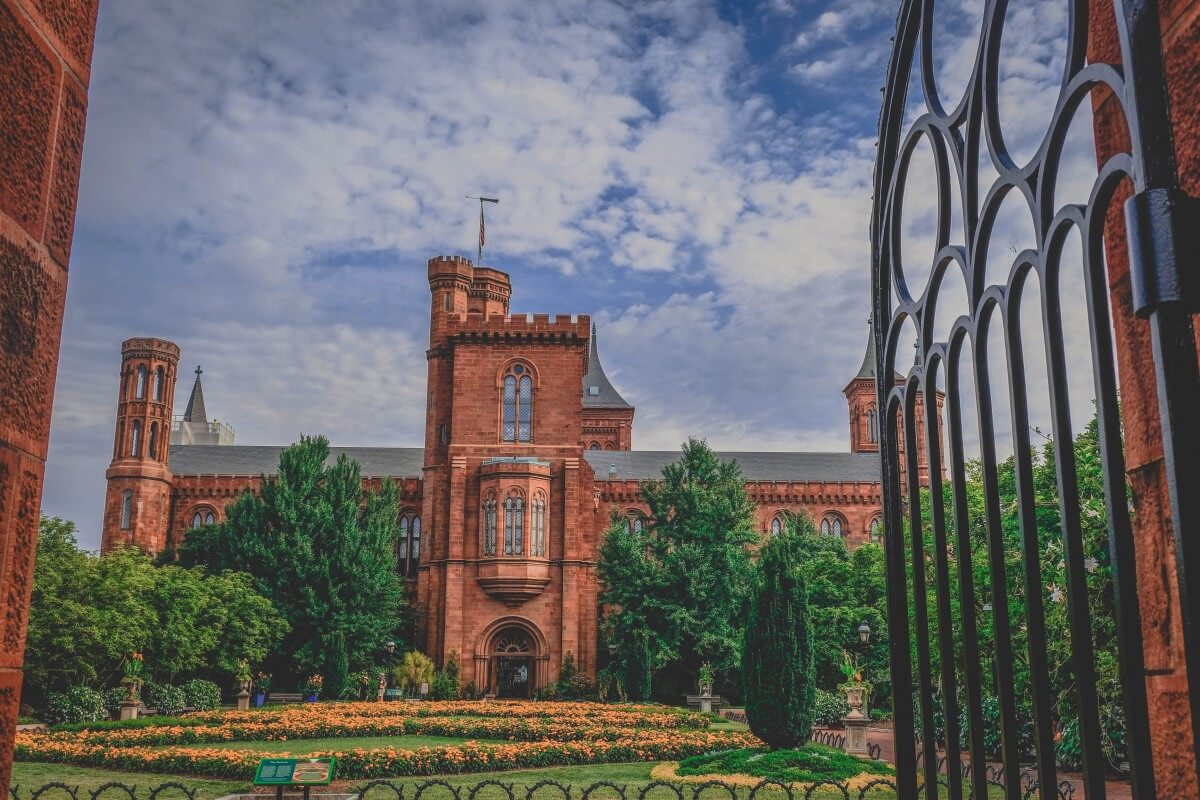
Growing up in Virginia, I ended up visiting the Smithsonian Institution a lot (like for every class trip, after-school trip, and weekend trip – y’all, Northern Virginia schools only have one go-to field trip idea).
I lived in a small(ish) town in NOVA , went to school roughly fifteen minutes from DC, and was a museum geek.
So (unsurprisingly) in elementary school and middle school, when my mum was done with work, we’d visit the Smithsonian together. And by the time high school rolled around, I practically lived at the Smithsonian ( I used to pretend to be a tour guide at the National Museum of Natural History – a cringe-worthy part of my life I’m trying to forget ).
But I hands-down love the Smithsonian Institution . Every time I go back, I immediately feel at home.
I’ve been to all twenty complexes, including the two in New York, and to every one of them at least a dozen or so times.
In this guide, I’m going to be spilling all my top tips for visiting the Smithsonian!
Table of Contents
Smithsonian Travel Guide
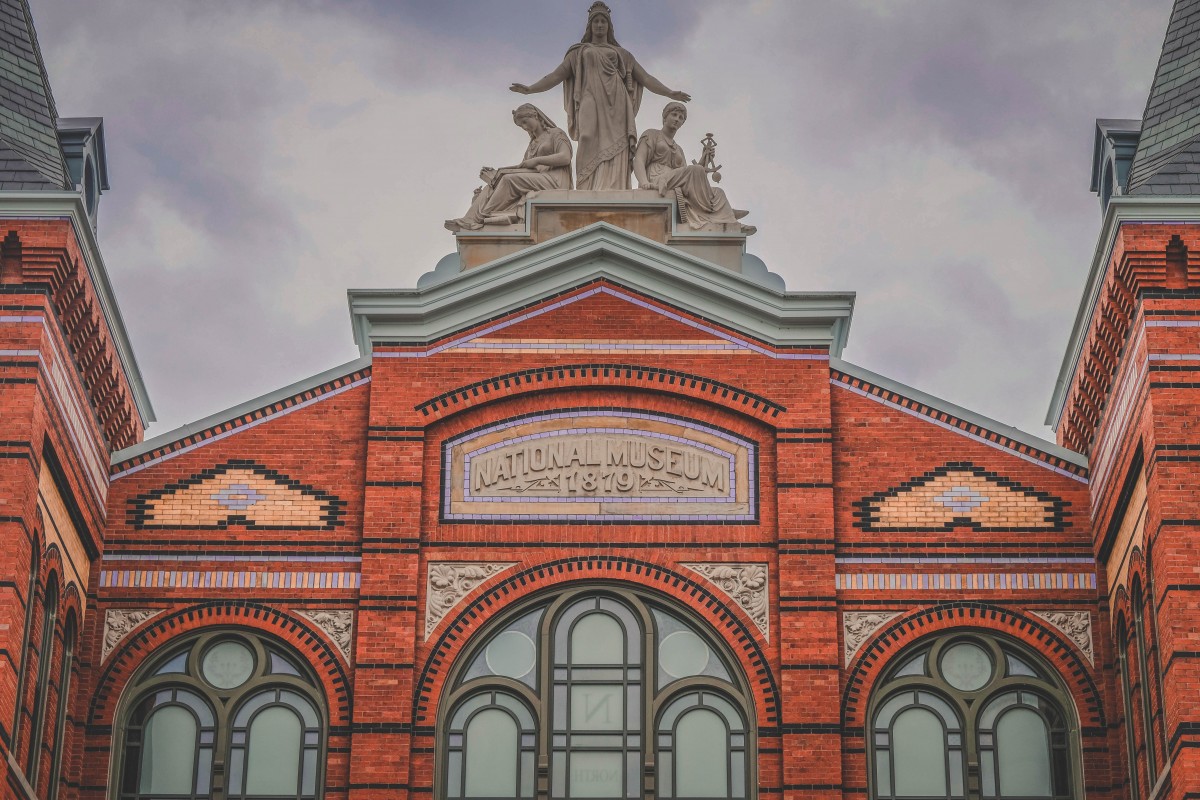
The Smithsonian Institution is a cluster of museums and research buildings on the East Coast.
Each year, roughly 28 million people visit the Smithsonian, making it one of the most popular cultural centers in the United States.
How Do You Get To The Smithsonian?

It’s really hard to find good parking near the Smithsonian ( especially for the museums by The Mall ).
Although D.C. follows an easy to understand grid system, driving in-and-around the city is not my favorite thing on the planet. Metered parking is expensive ( unless you are planning on visiting the Anacostia Community Museum ).
Parking at the National Zoo itself is $25 ( yikes )!
As a result, my favorite way to travel around D.C. is by metro.
You’ll need a metro pass ( which you can purchase at the station ). The metro stops by the main museums on the blue, green, orange, and yellow lines. I usually hop off the metro at the closest stop and walk from there.
Complete List Of Smithsonian Buildings
- African American Museum
- African Art Museum
- Air And Space Museum
- Air And Space Museums Udvar-Hazy ( Virginia )
American Art Museum
- American History Museum
American Indian Museum
- American Indian Museum Heye Center (New York)
- Anacostia Community Museum
- Archives Of American Art
- Cooper Hewitt ( New York )
Freer Gallery Of Art
- Hirshhorn Sculpture Garden
National Zoo
- Natural History Museum
- Portrait Gallery
- Postal Museum
- Renwick Gallery
- S. Dillon Ripley Center
- Sackler Gallery
- Smithsonian Castle & Gardens
Top 10 Smithsonian Museums To Visit
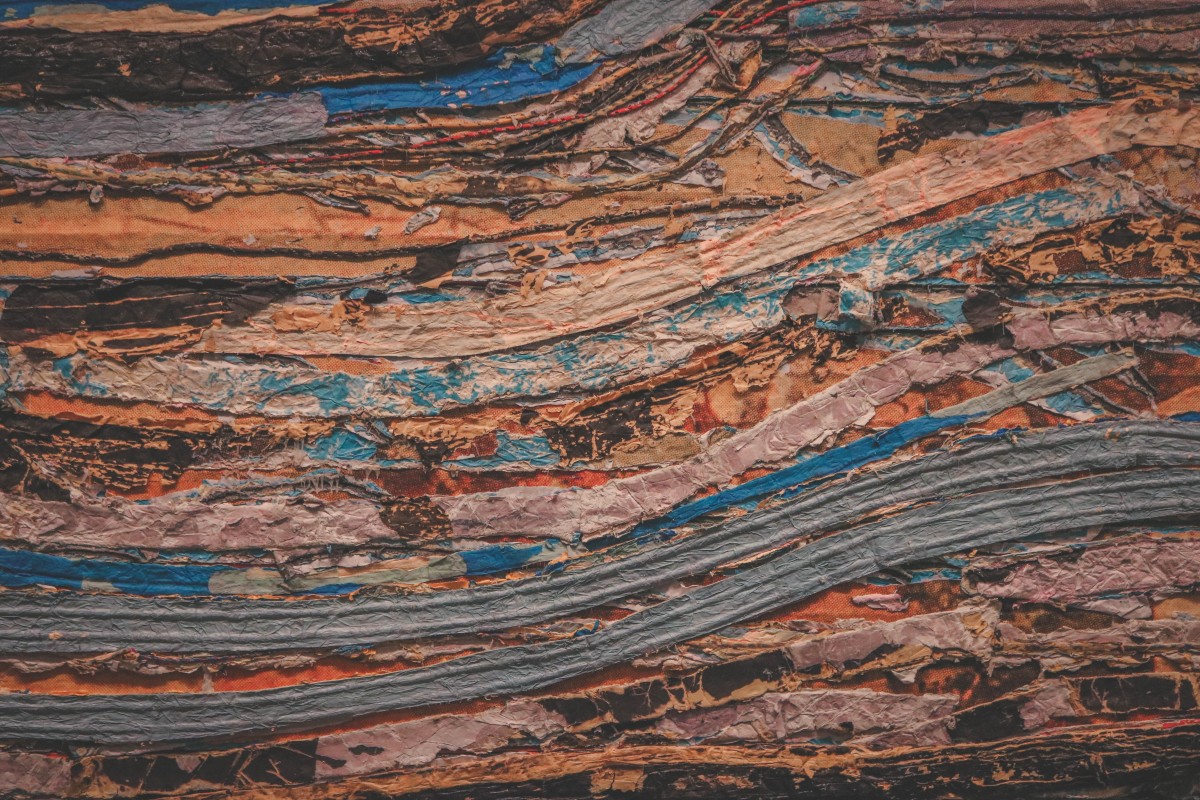
Over the years, I’ve definitely developed a soft spot for certain museums. Here are my personal favorites ( in no particular order ).
Smithsonian National Museum Of African Art
The African Art Museum is easy to miss. It’s right behind The Castle in a small square building topped by a blue dome. Inside is traditional African art – classic wooden statues that play on proportions, oil paintings that manipulate mood, vivid colored works cut to extravagant detail.
The museum is small so if you want a slower-paced visit ( where you don’t feel rushed to see everything ), this is one of my top picks!
National Museum Of Natural History
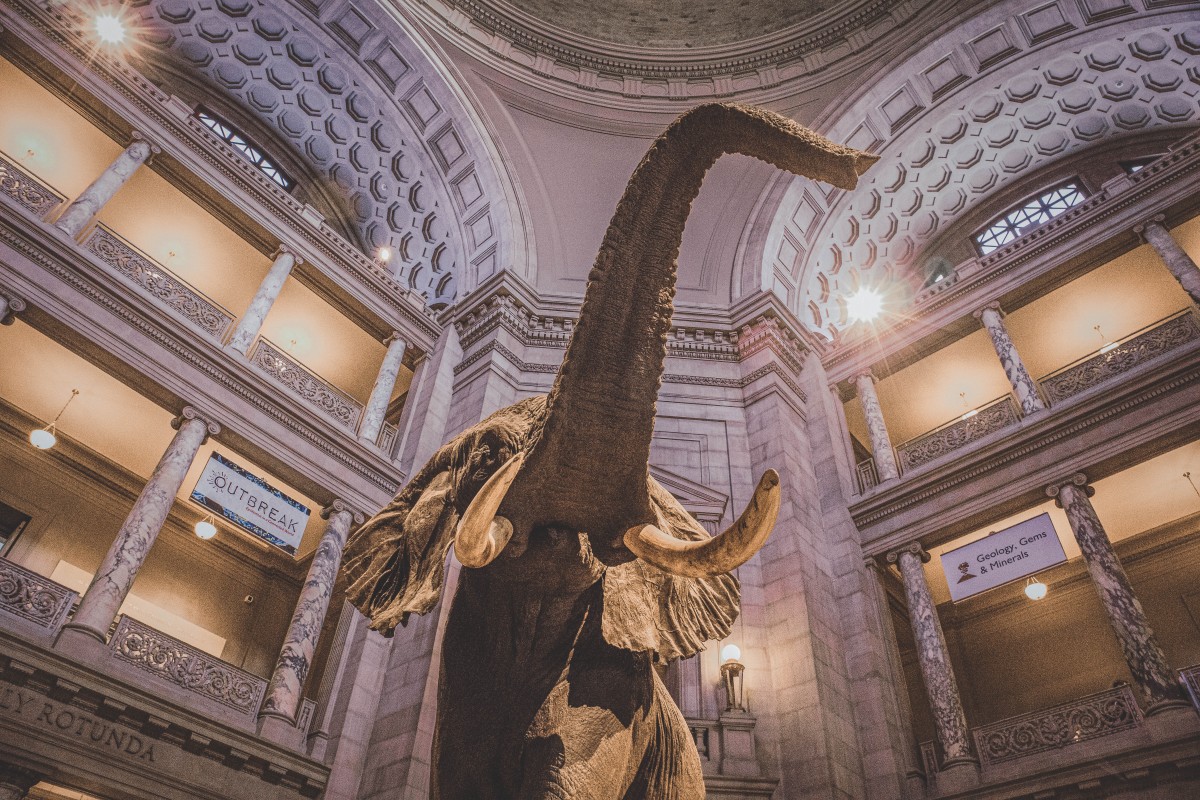
By far my favorite museum in the Smithsonian Collection is the National Museum of Natural History.
You’ll need an entire day ( or two ) to see this museum ( it is h-u-g-e ). And the exhibits vary from historic to art-focused to straight-up insect pavillions.
Travel Tip: You can take a virtual tour of the National Museum Of Natural History.
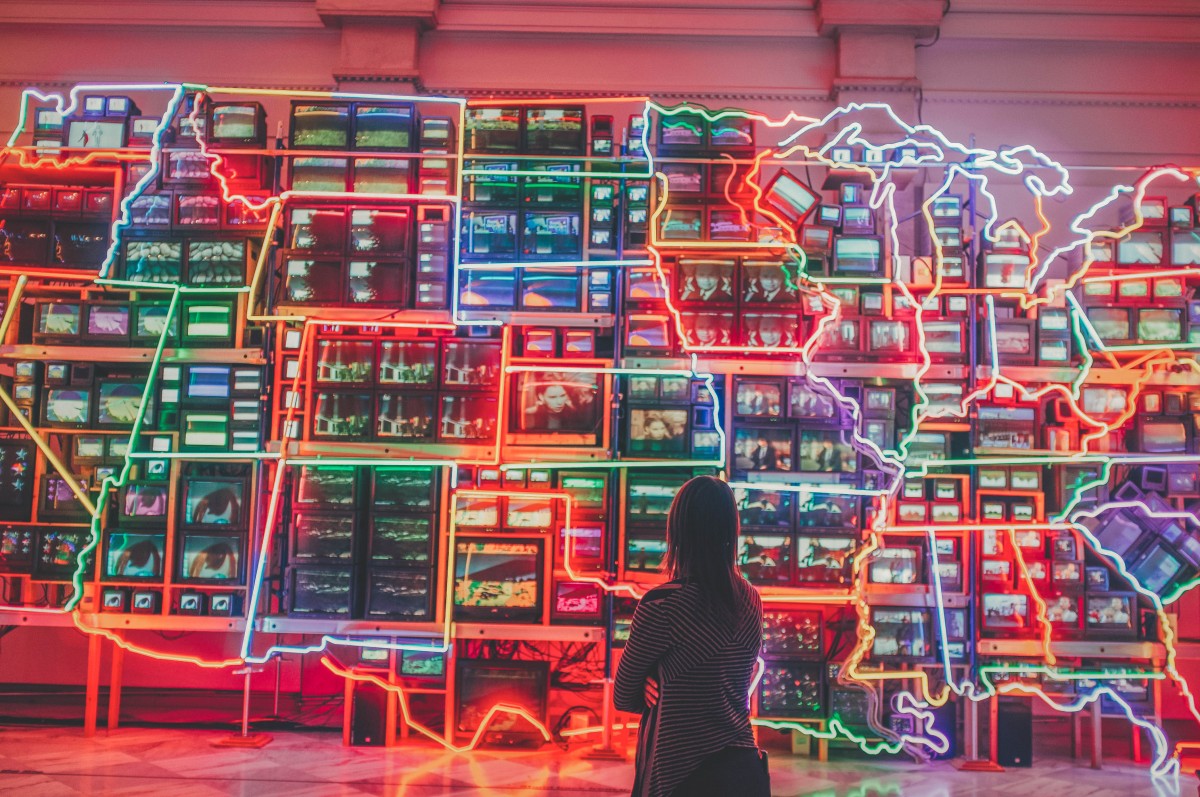
The interior of the American Art Museum feels like a time warp – extremely modern and charming at the same time.
Museums get a bad rap for being old, stuffy buildings, but the American Art Museum really slashes that stereotype. It’s incredibly photogenic .
P.S. One of my favorite oil paintings of all time, “Cape Cod Morning” by Edward Hopper is on the South Wing of the first floor. Despite the cheerful colors, it is stark and slightly broody, which is why I love it.
P.P.S. The National Portrait Gallery and American Art Museum are in the same building (so you can visit both whilst there).
My mum used to work five minutes ( by foot ) from the Freer Gallery Of Art so this is the Smithsonian Museum I ended up visiting the most ( so I’m a little biased when I say it is one of my favorites ).
Freer focuses on Asian Art . And the best exhibit ( though, they’re all good ) is the Peacock Room – an entire wall colored jade, shelves of bright vases, gold paneling.
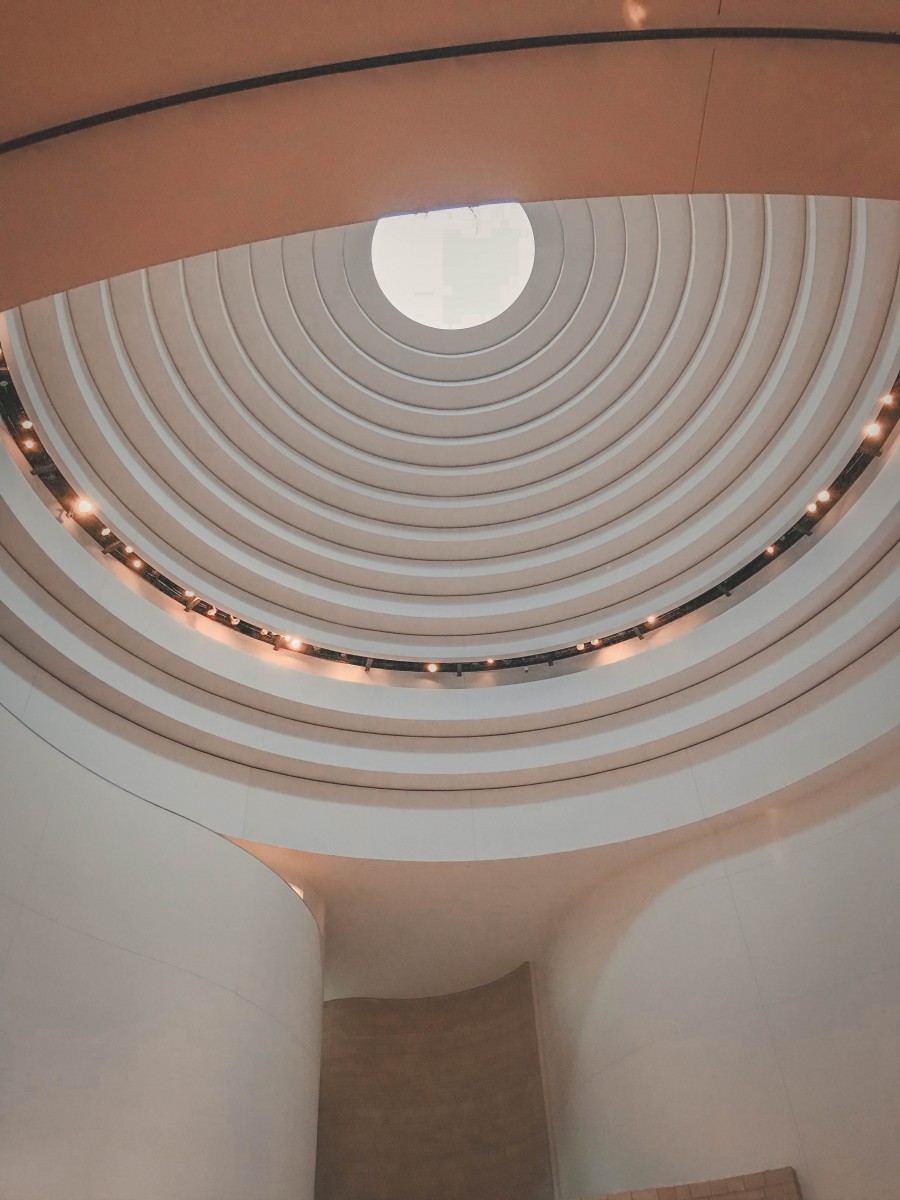
The American Indian Museum is my favorite museum architecturally . The building is beige and built to look like a ripple. The curved walls are layered like waves. It’s all-things modern, but the thin blocked windows are reminiscent of the distinctive Pueblo adobe-home style.
P.S. This museum has the best gift shop out of all the Smithsonian complexes ( the gift shop feels like an exhibit unto itself ).
American Museum Of National History
This is one of the lesser-visited Smithsonian Museums ( lots of tourists get it mixed up with the Natural History Museum and skip it, thinking they’ve already visited) .
The American Museum of National History is home to the star-spangled banner, but there are lots of other exhibits ( about everything from food during war times to women’s history stories ) that are worth seeing.
While I’ve stopped visiting zoos ( for environmental reasons ), I loved visiting the National Zoo as a kid ( so much so that it still warrants a mention ).
From the Cheetah Conservation Station to the Think Tank to Amazonia , there are so many animals here ( I actually wrote a book when I was eight based on what I observed at this zoo. It was just as terrible as you’d expect and I’m so incredibly grateful it remains unpublished, collecting dust in my parent’s house ).
National Museum Of African American History
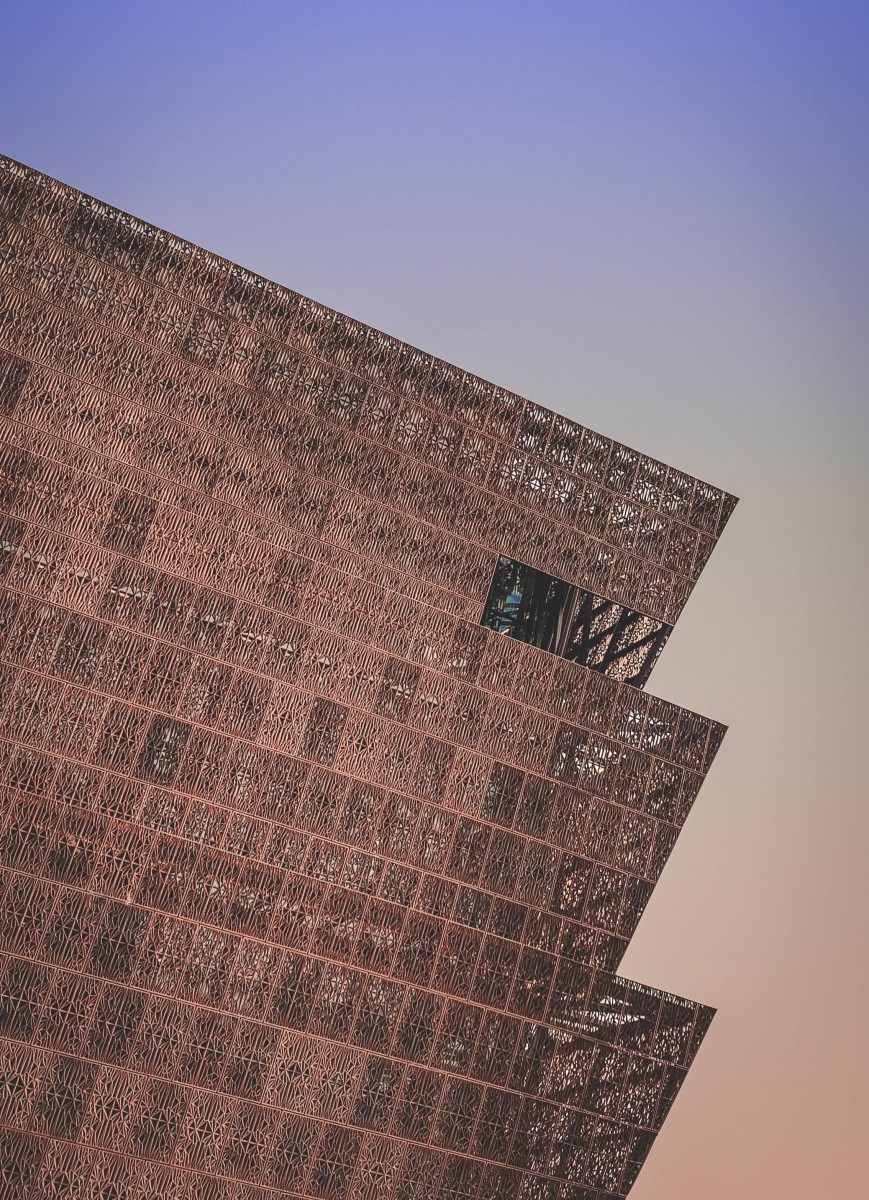
This museum was under construction while I lived in Virginia so I only got a chance to see it during my most recent trip to the Northeast ( a few days after visiting Philadelphia ).
And it’s now one of my favorites. To make the most of your visit, hit up the history exhibits first ( before heading to the L-level community galleries ).
10 Travel Tips For Visiting The Smithsonian
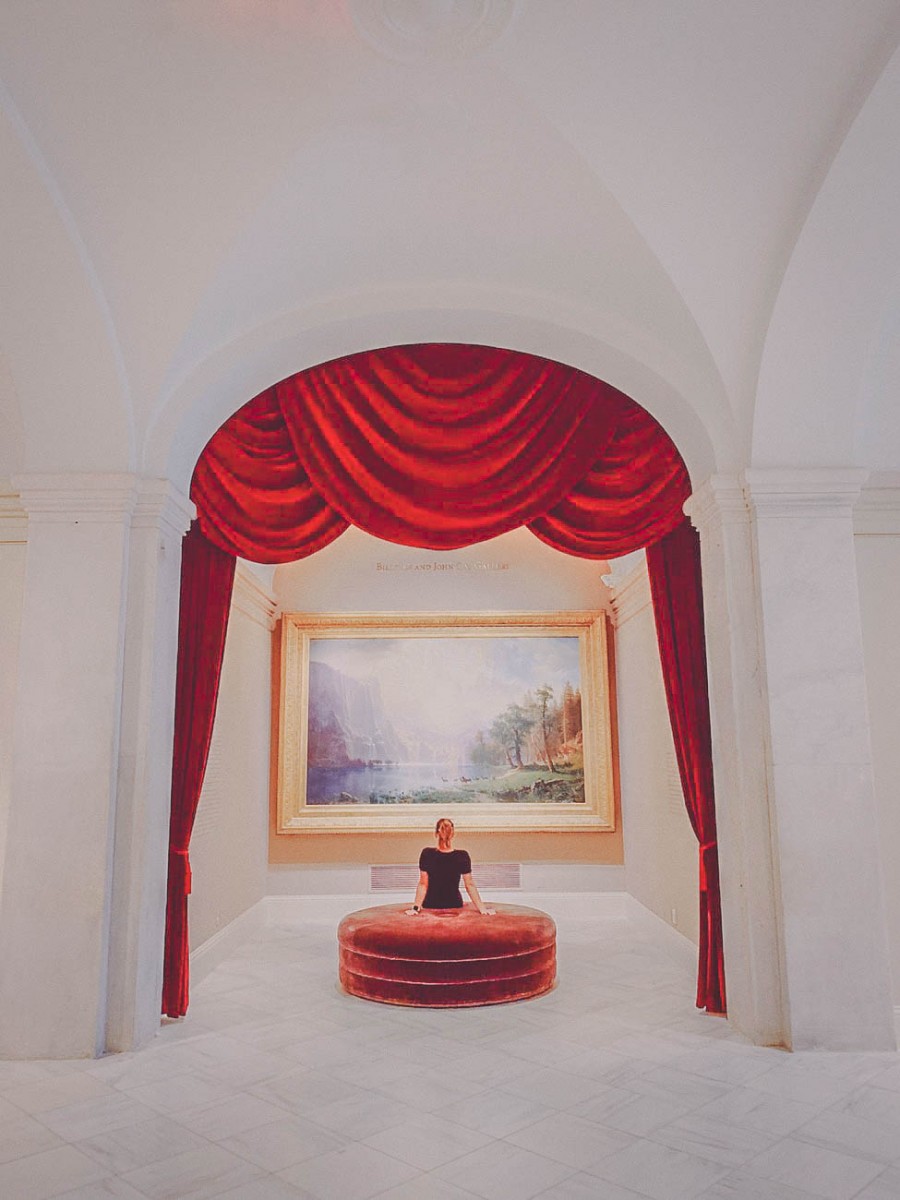
- Although you can’t bring food into the museums, you can bring bottled water ( which I highly recommend because the museums are gigantic and you’ll be walking a lot ).
- You’ll want to plan for a max of two museums a day ( just to take in the whole experience ).
- And you don’t have to visit every museum! Just visit the ones you are truly interested in ( it took me a full year to see them all as a quasi-local so if you only have a weekend, don’t stress out ).
- The Hope Diamond is the Natural History Museum’s premier display and it gets off-the-walls crowded ( so head there first, when the museum opens at 10 AM, then make your way around the rest of the floors ).
- The National Postal Museum is a bit further away so it gets very few visitors, but it’s also one of the coolest museums to visit if you love stamp collecting ( they sell gorgeous stamps in their gift shop too ).
- A few of the museums have IMAX theatres. With the exception of the Udvar Hazy Museum ( hint ), these get really crowded ( to guarantee good seats, try to select a documentary-style movie versus big-budget screenplay ).
- Street food right outside the museum is much cheaper ( and better ) than what’s served inside.
- The best time to visit is early in the week ( Mondays, Tuesdays ) in the fall, winter, or spring.
- Empty your pockets before the screening ( and try to pack light ) to streamline the security process.
- The National Gallery of Art has a gelato bar. You can thank me later ( just kidding. but seriously, I hope you enjoy it as much as I do ).
Did you find this guide to visiting the Smithsonian (plus Smithsonian tips) useful? Let me know your top Smithsonian tips for visiting the Smithsonian in the comments below!
Editor-In-Chief
Anshula grew up with a love of stories and places. Thirty-five states and 100 bookstores later, she's made her hobbit home in Middle Tennessee. Her Tookish side still takes over and leaves her chasing window seats, literary destinations, adventure books, sunrise coffee, and indie bookshops. She's appeared as a travel source on HuffPost, Reader's Digest, and MSN.
Related Posts
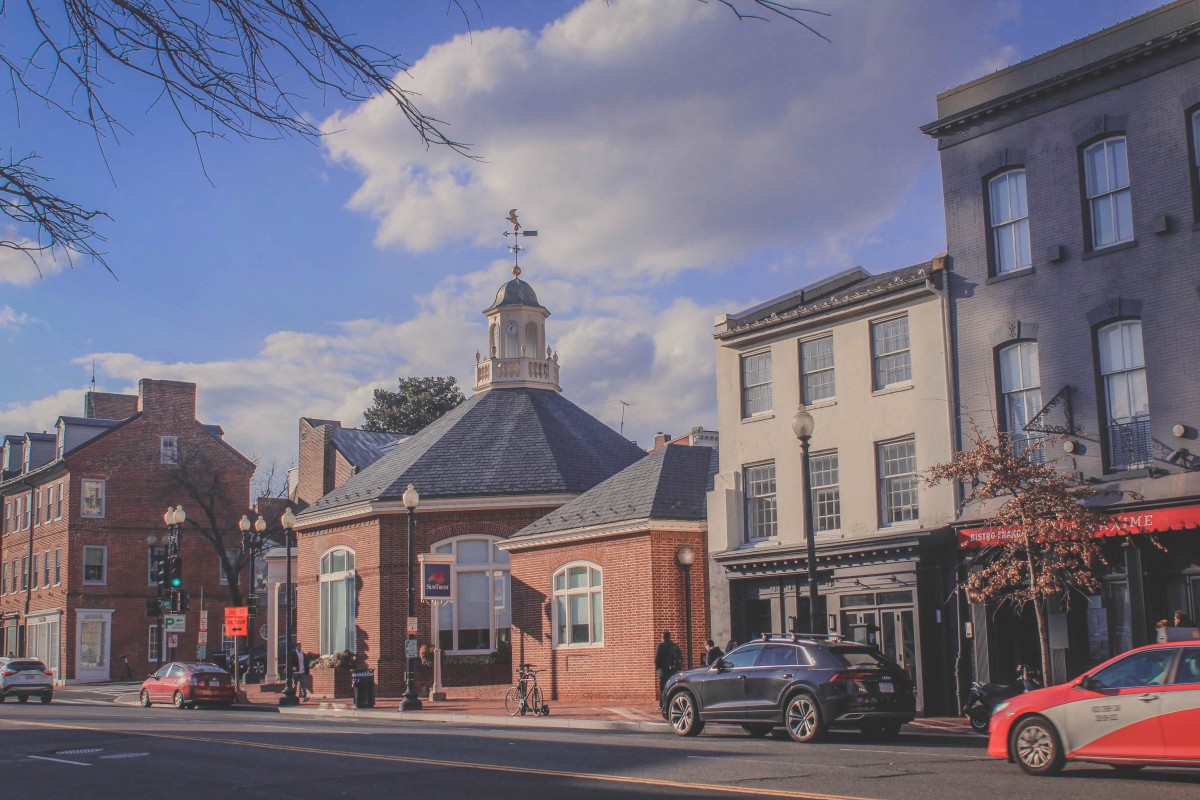
Top 10 Things To Do In Georgetown DC
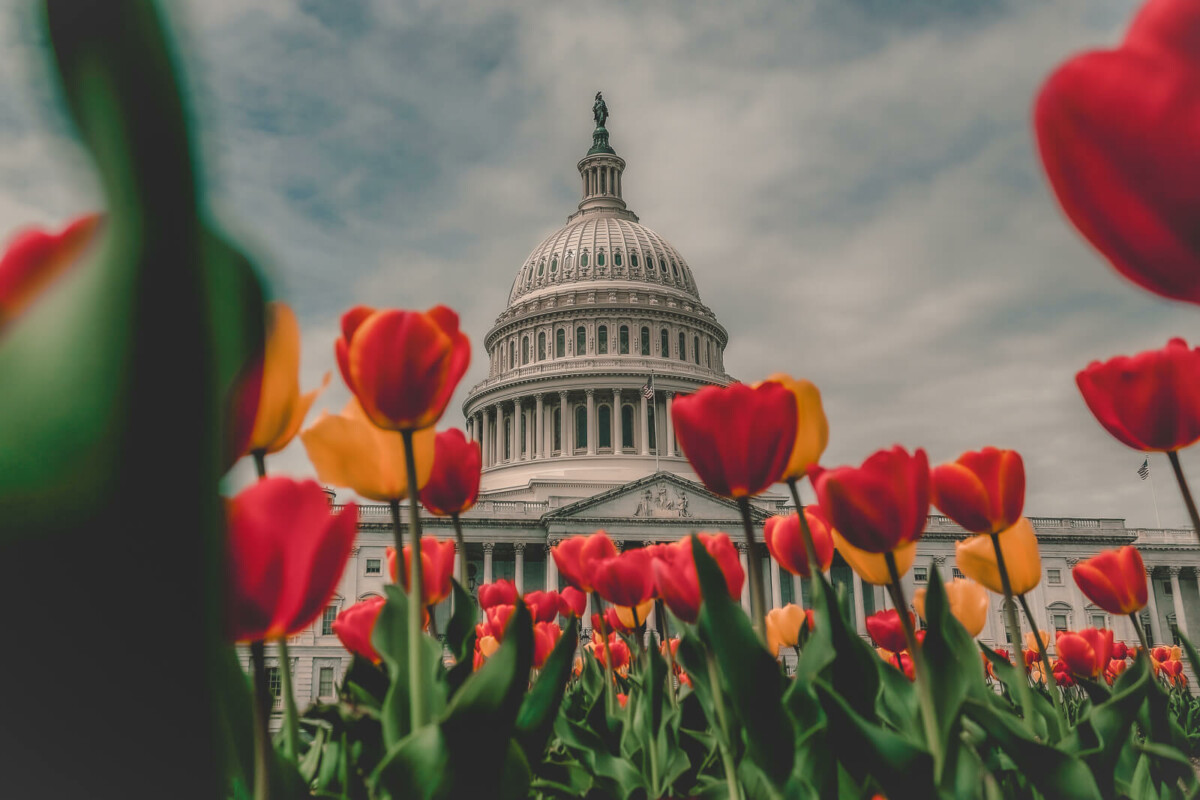
Best Time To Visit Washington DC (2024)
35 comments.
Quite a tour. Thank you for sharing it.
Thank you! I’m glad you enjoyed it!
Awesome post! I haven’t gotten to the smithsonian yet, but will save this post for future-lots of good tips!
Thanks! I used to live near DC, so I ended up visiting quite a bit 🙂
Love this! I had no idea there were so many different parts of the Smithsonian.
Oh, yes! There are actually several other parts – the Postal Museum and the American History Museum, just to name two, but they never had a huge impact on me, so I left them out of the list.
This will be on my list of places to see now! Thanks for the tips 🙂
Yay! I’m so glad you found my guide to the Smithsonian useful 🙂
First of all, I love your writing! Very fun to read. And I went to the Smithsonian several years ago but didn’t have enough time to go through all the museums. I definitely want to go back!
Thank you so much! I’m excited to know that you’ve visited some of the museums as well! Which ones did you visit?
This is a great post! I live in the DC area and absolutely love going to the Smithsonian(s). This post is what I aspire to right about! Lovely writing voice, too! Subscribing. 🙂
Thank you! That means so much to me! What is your favourite Smithsonian institution? P.S. I think it’s amazing that Dave Grohl inspires you to write 🙂
Thank you! I think my favorite is a toss up between the Zoo and the Air & Space Museum. Both are so great, but so different!
Yes! My personal favourite is the Zoo, but I love the Air & Space Museum as well (it’s the most visited for a very good reason).
Hi Anshula! Love this post!I really like you pics of the beautiful flowers and national zoo.Very helpful guide and great tips.
Thank you so much! I’m glad that you found it helpful!
Great post! Bookmarking for future travels 🙂
Wow! I had no idea on the history. Fab tips Anshula 🙂
Thank you so much! The history is kind of swept under for the most part. No ones like to admit that Smithson pretty much just donated money to upset his father, but I’ve always found it fascinating.
I would love to get there soon! It’s been on my list for awhile now! Awesome info! This will definitely be useful whenever I go 🙂
Thank you so much! I’m so happy that you found my little guide useful 🙂
Great post! We love all things Smithsonian! It inspired my daughter so much that she has decided to become an archaeologists. On a side note: I’m totally jealous of those hydrangeas!
That’s amazing! PS: I wish I had Smithsonian-level hydrangeas too.
I’ve never been to the Smithsonian but I have always heard some incredible things. I’ll be sure to check it out the next time I’m in Washington!
The Smithsonian is wonderful! It is definitely a Washington bucket list item!
Love the infograph. Such a great idea. The botanical gardens look amazing! I could spend a day there!
I’m so glad you liked the infograph! The Botanical Gardens are indeed amazing (I’ve been there six times already and I still want to go back)!
Really great guide to the Smithsonian! Makes me really want to go! My favourite museum might be the ROM (Royal Ontario Museum). I went there when I was a kid, and I remember I loved it so much. It was huge and had so much in it!!
I’ve never been to the Royal Ontario Museum, but I just googled ROM and it looks architecturally astounding! That geometry is crazy! I’m definitely adding it to my bucket list!
i’ve always wanted to go! it’s on my list for soon.
You should go if you’re in D.C.! Visiting the Smithsonian is a great way to spend a day or two or three 😉 Every time I revisit, I manage to find something new.
Oh, we’ve spent only 4 days in Washington, D.C., but loved the Smithsonian so much! Te castle is so beautiful and we ended up spending 1,5 days of our 4 in the Natural History Museum alone. We have to go back one day, it’s so much to see there. And your pics about the botanical gardens are quite tempting… 😀
There is so much to cover in the Natural History Museum. I still don’t feel like I’ve covered it all (and this is coming from a girl who spent fourteen days there). Yes! Definitely see the botanical gardens the next time you go. Did you visit any other institutions on the other three days? What else did you see?
Haha, we believe you! We mostly visited the attractions of the National Mall during our stay in DC and honestly, we haven’t really planned to spend much time in any of the Smithsonian museums, but we just couldn’t resist the temptation in the end. But we did it right. 😀 We briefly visited the National Museum of American History, too, but that was really just a couple of hours before closure.
Leave a Reply Cancel reply
Your email address will not be published. Required fields are marked *
Notify me of new posts by email.
What are you looking for?
A Visitor's Guide to the Smithsonian Museums in Washington DC
A Guide to All of the Museums in Washington DC
:max_bytes(150000):strip_icc():format(webp)/Rachel-58092b055f9b58564c6639af.jpg)
The Smithsonian Museums in Washington, DC are world class attractions with a variety of exhibits ranging from a 3.5 billion-year-old fossil to the Apollo lunar landing module. Visitors enjoy examining more than 137 million objects, including many irreplaceable historic artifacts, works of art, scientific specimens and cultural exhibits. Admission to all of the Smithsonian museums is free. With 19 museums and galleries, there truly is something for everyone. Guided tours, hands-on activities and special programs are available. Although many of the museums are located within walking distance to each other on the National Mall, several of them are located in other parts of the city.
Following is a guide to help you plan your visit to the Smithsonian.
General Information
- Frequently Asked Questions
- A Map of the Smithsonian Museums
- 10 Things to Know About the Mall in Washington DC
Museums Located on the National Mall
- Smithsonian Institution Building - 1000 Jefferson Drive SW, Washington, D.C. The historic building, also known as the Castle, is a good place to start your tour of the museums. The Smithsonian Information Center is located here and you can find a map and schedule of events.
- Smithsonian Arts and Industries Building - 900 Jefferson Drive SW, Washington, DC. The original home of the National Museum is currently closed for renovations.
- Smithsonian National Air and Space Museum - Jefferson Drive, between 4 th Street and 7 th Street, SW, Washington, D.C. This impressive museum displays the largest collection of air and spacecraft in the world as well as smaller items like instruments, memorabilia, and clothing. Learn about the history, science, and technology of aviation and space flight.
- Smithsonian Hirshhorn Museum and Sculpture Garden - Independence Ave. and 7th St. SW, Washington, D.C. The modern and contemporary art exhibits include arts of traditional historical themes and collections addressing emotion, abstraction, politics, process, religion, and economics.
- Smithsonian Freer Gallery - 1050 Independence Ave. SW, Washington, D.C. The world-renowned collection highlights art from China, Japan, Korea, South, and Southeast Asia, and the Near East. Paintings, ceramics, manuscripts, and sculptures are among the favorites of this museum. The Eugene and Agnes E. Meyer Auditorium provides free programs relating to the collections of the Freer and Sackler galleries, including performances of Asian music and dance, films, lectures, chamber music, and dramatic presentations.
- Smithsonian Sackler Gallery - 1050 Independence Ave. SW, Washington, D.C. This unique building is connected underground to the Freer Gallery of Art. The Sackler collection includes Chinese bronzes, jades, paintings and lacquerware, ancient Near Eastern ceramics and metalware, and sculpture from Asia.
- Smithsonian National Museum of African Art - 950 Independence Ave. SW, Washington, D.C. The collection includes ancient as well as contemporary works from Africa. There are special events, storytelling, demonstrations and children’s programs.
- Smithsonian Natural History Museum - 10th St. and Constitution Ave. NW, Washington, D.C. At this family favorite museum, you will see a variety of artifacts including an 80-foot dinosaur skeleton, a life-size model of a blue whale, an enormous prehistoric white shark, and a 45-and-a-half karat jewel a known as the Hope Diamond. The Discovery Room is a great hands-on display for young children. Feel the skin of a crocodile, examine the jaws and teeth of different animals or try on clothes from around the globe.
- Smithsonian American History Museum - 12th to 14th Sts. NW, Washington, D.C. With more than 3 million artifacts of American history and culture, visitors learn about the nation's history from the War of Independence to the present day. At the heart of the museum, the Star-Spangled Banner—one of the most recognized symbols of the nation—has been given a new state-of-the-art gallery. New galleries such as the Jerome and Dorothy Lemelson Hall of Invention, presenting “Invention at Play,” join old favorites including “The American Presidency: A Glorious Burden” and “America on the Move.”
- Smithsonian National Museum of the American Indian - 4th St. and Independence Ave. SW, Washington, D.C. The newest museum on the National Mall in Washington, DC showcases Native American objects from ancient pre-Columbian civilizations through the 21st century. Multimedia presentations, live performances, and hands-on demonstrations will bring the Native American people’s history and culture to life.
- Smithsonian International Gallery - 1100 Jefferson Drive, SW Washington, D.C. Housed in the S. Dillon Ripley Center, this is the education and membership branch of the Smithsonian Associates and hosts a variety of traveling exhibits. The Smithsonian Discovery Theater and conference facilities are also located here.
- Smithsonian National Museum of African American History and Culture - Independence Ave. SW, Washington DC. The 300,000-square-foot museum is under construction and is expected to open in 2016. The museum has created a website to involve the public in planning a variety of exhibits and educational programs on topics such as slavery, post-Civil War reconstruction, the Harlem Renaissance, and the civil rights movement.
Don't miss the other Smithsonian Museums that are located off of the Mall:
- National Zoo - Rock Creek Park , Washington, DC. The National Zoo is a part of the Smithsonian Institution with more than 435 different species of animals. Open year-round, the world-class property offers the opportunity to view and learn about favorites including giant pandas, elephants, tigers, cheetahs, sea lions and much more. The Smithsonian Biology Conservation Institute , the Zoo's conservation, and research center, located in Front Royal, Virginia, is a breeding preserve for rare and endangered species.
- Smithsonian Anacostia Community Museum - 1901 Fort Place SE, Washington, DC. This small museum focuses on African American culture. Exhibits rotate and feature regional and national topics.
- Smithsonian National Postal Museum - 2 Massachusetts Ave. NE, Washington, DC. The museum displays the largest stamp collection in the world and examines the development of the postal system using interactive displays. This museum is located under Washington's old Main Post Office near Union Station.
- Smithsonian Renwick Gallery - 70 9th St. NW, Washington, DC. The building was the original site of the Corcoran Gallery and is furnished with American crafts and contemporary arts from the 19th to 21st centuries. The museum features unique works of art in an impressive setting across the street from the White House.
- National Portrait Gallery and the Smithsonian American Art Museum - 8th and F Streets NW., Washington, DC. This restored historic building in the Penn Quarter neighborhood of downtown Washington, DC, houses two museums in one building. The National Portrait Gallery presents six permanent exhibitions of nearly 20,000 works ranges from paintings and sculpture to photographs and drawings. The Smithsonian American Art Museum is the home of the largest collection of American art in the world including more than 41,000 artworks, spanning more than three centuries.
- Steven F. Udvar-Hazy Center - 14390 Air and Space Museum Pkwy, Chantilly, VA. The Smithsonian National Air and Space Museum opened a companion facility on the property of Washington Dulles International Airport to showcase additional aircraft, spacecraft, and other artifacts. The museum has an IMAX Theater , flight simulators, a museum store, guided tours, and educational programs.
The Best Art Museums to Visit in Washington, D.C.
15 Best Places to Go with Kids in the Washington, D.C. Area
Best 14 Washington, D.C. Museums
Washington DC Old Town Trolley Tours: Hop on Hop off
What to See and Do on the National Mall in Washington, D.C.
20 Best Things to Do in Washington, D.C.
Two Days in Washington DC: A 48 Hour Itinerary
Smithsonian Museums Maps and Directions
8 Best Events in the Washington D.C. Area in February
12 Best Things to Do in Washington, DC, With Toddlers
Smithsonian's Discovery Theater in Washington, DC
50 Best Free Things to Do in Washington, DC
The National Mall: What to Know Before You Go
Spend the Night at These 10 Museums
Top 12 Places to Visit in the US
Smithsonian National Air and Space Museum

The Ultimate Guide to the Smithsonian Museums
“Can we visit the Smithsonian?” It’s a common question I get asked when people visit me from other states. But the Smithsonian isn’t just a single place that you can visit in a day! The Smithsonian Institution includes 21 museums plus the National Zoo making it the largest museum, education, and research complex in the world. Most of the museums are on the National Mall in Washington, DC plus two in New York City and one in Chantilly, VA. So, it’s going to require some time to visit everything! That said, the Smithsonian museums are a great way to spend any kind of day in the city. They are perfect for first-time tourists, locals, and escaping any kind of harsh weather.
If you are visiting DC or guiding out-of-town friends, remember that bucket list item to “visit the Smithsonian” might take a little more planning for someone who didn’t realize how big it is. This guide will break down the 21 museums and give you a sense of what you’ll see when you visit.
Visit the Smithsonian Museums on the National Mall
Smithsonian gardens.
- Independence Ave SW
- L’Enfant and Smithsonian
- Recommended time: 1 to 2 hours
- No tickets required
The Smithsonian Gardens are behind the Smithsonian Institution Building, affectionally referred to as The Castle. The Castle is a great place to start your trip as it is home to the Smithsonian Visitor Center. While you are there, make sure you take photos of The Castle and visit the garden in the back. You’ll find the Enid A. Haupt Garden, Moongate Garden, and Kathrine Dulin Folger Rose Garden. The gardens change with the seasons and make great backgrounds for photos year-round.
The gardens are walkable from 2 metro stops: Smithsonian & Federal Triangle (orange, blue, silver) and L’Enfant Plaza (green, yellow, orange, blue, silver). Open daily except Christmas.

National Museum of Natural History
- 10th Street and Constitution Ave NW
- Free ($8 for the Butterfly Pavillion)
- Smithsonian, Federal Triangle, Archives
- Recommended time: 2 to 4 hours
The National Museum of Natural History is one of the most recognizable of the Smithsonian museums due to the large African Elephant in the lobby. You’ll find larger-than-life exhibits, including the Hall of Fossils (lots of dinosaurs), Ocean Hall, and the Hall of Geology, Gems, and Minerals (including the Hope Diamond). Plus, don’t miss the smaller natural world with the Insect Zoo and Butterfly Pavilion.
This museum is great for all ages, but it is also a particularly good place to start if you are traveling with children. There is so much to see, and a lot of it is interactive. Because of the sheer size of many exhibits, it’s easy to keep short attention spans interested and fill an entire afternoon. For extra fun, check out the Butterfly Pavillion with live butterflies. It’s open Tuesday to Saturday, and tickets are $8/adult or free on Tuesday. Plan for 2-4 hours.
The Museum of Natural History is easily walkable from three metro stops: Smithsonian or Federal Triangle (orange, blue, silver) and Archives (green, yellow). Open daily except Christmas Day. Timed tickets are not required.

National Museum of American History
- 1300 Constitution Ave NW
- Recommended time: 1 to 4 hours
Many of the Smithsonian museums cover aspects of our country’s history, but the Museum of American History is a great place to start. This museum usually features a variety of rotating exhibits to cover as much history as possible throughout the year.
Ongoing exhibits include American Democracy, The First Ladies, Food: Transforming The American Table, and The Star Spangled Banner: The Flag that Inspired the National Anthem. The Museum of American History is great for all ages but might be better for kids and teens with some context for history through school.
National Museums of African American History and Culture
- 1400 Constitution Ave NW
- Smithsonian, Federal Triangle
- Recommended time: 4 to 6 hours
- Tickets required
The Museum of African American History and Culture opened in 2016 and remains among the most popular Smithsonian museums. You can easily spend an entire day exploring this museum. Generally, the museum covers early American history on the lower flowers and works its way up to the present day. If you only have a few hours, I recommend selecting a few museum sections, including the two lower floors or the pop culture exhibits on the top floor. You’ll find everything covering slavery and freedom, sports, pop culture, visual arts, and more.
Timed tickets are required to visit the Museum of African American History. They are available for groups up to 6 people 30 days in advance on a rolling basis. The museum is walkable from 2 metro stops: Smithsonian and Federal Triangle (orange, blue, silver). Open daily except Christmas.
National Museum of African Art
- 950 Independence Ave SW
The National Museum of African Art features both traditional and contemporary art representing the entire continent. Current ongoing exhibits include Currents: Water in African Art and Visionary: Viewpoints of Africa’s Arts. This is a great museum to stop at if you are short on time but want to see a museum during your time on the National Mall. Not only is the museum on the smaller side but it tends to be less crowded. Even if you only have an hour or so, you’ll have room to spend as much time as you’d like with each piece.
The museum is walkable from 2 metro stops: Smithsonian (orange, blue, silver) and L’Enfant Plaza (green, yellow, orange, blue, silver). Open daily except Christmas.
National Museum of Asian Art
- 1050 Independence Ave SW
The National Museum of Asian Art includes the Freer Gallery of Art and the Slacker Gallery. The art collections across both galleries include more than 45,000 objects from the present day, dating back to Neolithic times. You’ll find pieces from China, Japan, Korea, South and Southeast Asia, and the Islamic World. It is also home to the world’s largest collection of works by James McNeill Whistler. Walking tours are available at 1:00 pm from Thursday to Sunday.
This museum is also smaller than some of the other Smithsonian museums and can still be appreciated if you are short on time. Or pair it with the National Museum of African Art right next door for a longer day of art appreciation.
Hirshhorn Museum
- 7th Street and Independence Ave SW
- Recommended time: 1 to 3 hours
- Tickets required for select exhibits
The Hirshhorn Museum features modern and contemporary art. You can visit anytime, but some of the more popular temporary exhibits require timed passes. Always check the website before you go to see what is on display. Also, don’t miss the sculpture garden right outside the museum with sculpture and water features. You can also visit the notable cafe with coffee and small snacks.
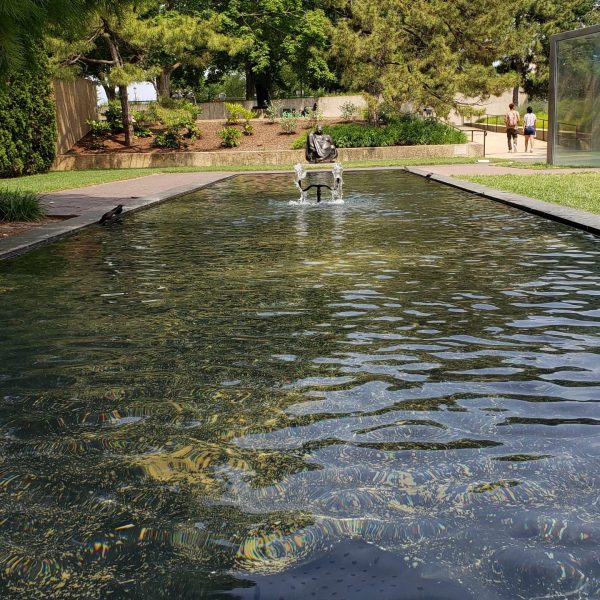
The Air and Space Museum
- 600 Independence Ave SW
- Free but there is an extra cost for the planetarium
The Air and Space Museum in Washington, DC, was recently renovated in 2022 and features a variety of exhibitions from The Wright Brothers, the first trip to the moon, and exploration of other planets. This museum requires free timed passes to visit, released in 6-week blocks. While the exhibits at the museum are free, you may want to consider a planetarium show which is $9 per adult. (The planetarium is closed until March 10, 2024 for renovations.)
National Museums of the American Indian
- 4th Street SW
- L’Enfant, Smithsonian, Federal Center
- Recommended time: 2 to 3 hours
The National Museum of the American Indian is home to one of the most expansive collections of Native artifacts. Like the African American History Museum, this museum has a wide variety of exhibitions covering both the extensive history of the American Indians and their impact today. One of my favorite exhibits is the powerful Americans exhibit highlighting Native American images used in pop culture. Connecting rooms dive deeper into the truth behind 3 widely known but frequently misunderstood historical events including the story of Pocahontas, the Trail of Tears, and the Battle of Little Bighorn. The Mitsitam Cafe is known to have some of the most interesting options among the museum cafes on the National Mall. The menu is divided into different regions with dishes representing native tribes across the continent.
The museum is walkable from 2 metro stops: Smithsonian & Federal Triangle (orange, blue, silver) and L’Enfant Plaza (green, yellow, orange, blue, silver). Open daily except Christmas.
Renwick Gallery
- 1661 Pennsylvania Ave NW
- Farragut West and Farragut North
The Renwick Gallery is very close to the White House and is set a little farther away from the rest of the museums on the National Mall. This gallery is a branch of the American Art Museums that focuses primarily on contemporary art. It is on the smaller side but is highly visual with regularly rotating exhibits. Art lovers of all ages will find these exhibits fun and engaging.
Smithsonian Museums in Downtown DC
Portrait gallery.
- 8th Street and G Street NW
- Gallery Place – Chinatown
The Portrait Gallery is the only place you can see all the Presidential Portraits outside of the White House. Wandering through the progression of US Presidents not only highlights snapshots of American history but also highlights pop culture and art trends used to portray each one. Additionally, you’ll find paintings and photographs of notable people from various points in history. While portraits of early Americans are often limited to the wealthy and powerful, The Portrait Gallery is actively working to ensure all Americans’ stories are represented.
The Portrait Gallery is connected to the American Art Museum by a large covered courtyard. You can easily experience both in the same afternoon. Outside food is allowed, so you can grab a bite from a nearby restaurant to enjoy in the courtyard. The courtyard also has Wi-Fi and is a lovely place to spend a “work from home” day.
The museum is walkable to the Gallery Place – Chinatown metro stop (green, yellow, red). Open daily except Christmas.
The American Art Museum
The American Art Museum is home to one the largest and most inclusive collections of American art in the world. Collections include photography, paintings, sculpture, and more representing artists from a variety of backgrounds and cultures. Currently, you can see a special exhibit from self-taught American artists. Because it is located so close to the Portrait Gallery, visitors get to see both artistic interpretations of both the American people as well as American life and culture in the same afternoon.
Be sure to spend some time in the courtyard that connects the Portrait Gallery and the American Art Museum (mentioned above).
The museum is walkable from the Chinatown metro stop (green, yellow, red). Open daily except Christmas.
Smithsonian Museums Outside Downtown DC
Anacostia community museum.
- 1901 Fort Pl SE
The Anacostia Community Museum is a space in the Anacostia neighborhood that is committed to telling the overlooked stories of the city. Exhibits are meant to shed a positive light on the stories of people making the most impact toward creating a more equitable future for all. Highlighted issues include social, economic, and environmental opportunities for growth.
The museum is about a 30-minute walk from the Anacostia metro stop (green). Open daily except Christmas.
National Postal Museum
- 2 Massachusetts Ave NE
- Union Station
The National Postal Museum is committed to the preservation and study of postal history. Dive into postal history with a massive collection of stamps and a special look at baseball through the lens of postal history. Visitors can also learn about what happens once a letter is dropped in the mail and how letters, magazines, and packages have traveled for the past 200 years.
The museum is walkable from the Union Station metro stop (red). Open daily except Christmas.
Steven F. Udvar-Hazy Center
- 14390 Air and Space Museum Pkwy Chantilly, VA
- Free but parking is $15
- Parking on site
The Steven F. Udvar-Hazy Center is located outside the city in Chantilly, Virginia. It is an extension of the Air and Space Museum on the National Mall. The Udvar-Hazy Center is worth a trip for all aviation lovers to see bigger aircrafts including Space Shuttle Discovery. While the planetarium remains closed in DC, don’t miss the IMAX theatre at the Chantilly location. Shows include topics like the moon landing, deep sea exploration, and aircraft carrier history. The theatre also features special showings of popular mainstream movies.
The Udvar-Hazy Center is not metro accessible but has plenty of on-site parking. The museum is free like the rest of the Smithsonian museums but plan to pay $15/car. Open daily except Christmas.
National Zoo
- 3001 Connecticut Ave NW
- Free but bring money for snacks
- Cleveland Park and Woodley Park
- Recommended time: 2 to 5 hours
The National Zoo in Washington, DC is free but requires timed tickets to visit. In the warmer months, the best time to visit the zoo is in the morning before the animals get too hot. There are also many food stalls available and daily animal demos.
While many of the food stands are closed during the winter, the colder months are an under-rated time to visit. The zoo is not very crowded and you can warm up in a little of the indoor exhibits including the Small Mammal House and Reptile Discovery House.
The National Zoo is easily walkable in a day but sometimes feels like it’s uphill both ways. If you have small children, it’s important to keep their physical limits (and yours if you are pushing a stroller!) in mind.
While the zoo offers plenty of snacks, consider grabbing lunch nearby at restaurants like Duke’s Counter or Open City.
The National Zoo is walkable from 2 metro stops: Woodley Park and Cleveland Park (both red). Open daily except Christmas.
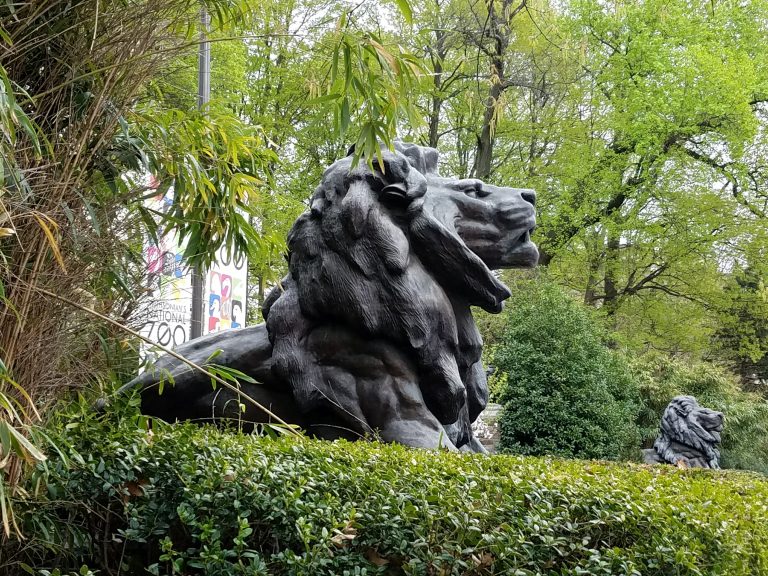
Similar Posts

Celebrating Joy Through Art with Mina from EWBA
Neighborhood Washington, DC art always grabs my attention. Nationally, DC is visually portrayed with grand photos of recognizable monuments almost exclusively. Don’t get me wrong, I never get tired of the beauty on the National Mall, but I don’t want the creativity and color of our many neighborhoods to get lost. So, when I started…

Show Your #Natitude at a Nationals Baseball Game
Nationals games are a huge part of my DC summer. Baseball is one of my favorite sports to watch live but #natitude unites DC in a unique way outside the world of sports. The energy from the 2019 World Series win is still alive even when the Nats aren’t scoring as many big runs. You…

Parallel Universe at Artechouse: An Immersive Art Exhibit
Parallel Universe at Artechouse: An Immersive Art Exhibit I am still kicking myself for missing Hirshhorn’s Infinity Mirrors exhibit last summer. So when I came across the creative and quirky Instagram photos from Parallel Universe, on display at Artechouse, I knew I had to jump at the chance to see it. Artechouse, near L’Enfant Plaza, proclaims…

11:Eleven Gallery Showcases UK Art in DC
11:Eleven Gallery Showcases UK Art in DC Nicola Charles, a British native and Founder of 11:Eleven gallery in Truxton Circle, didn’t always know her destiny was to open an art gallery, not to mention one in the United States. However, after a lot of soul searching and recognizing the need for a career change, she…

National Geographic Museum
National Geographic Museum For many, National Geographic is a household name – widely known for beautiful photography and a chance to see the world in a new light. While many people read the magazine or watch the channel, we have the added benefit of visiting the museum in downtown DC! The National Geographic Museum is…
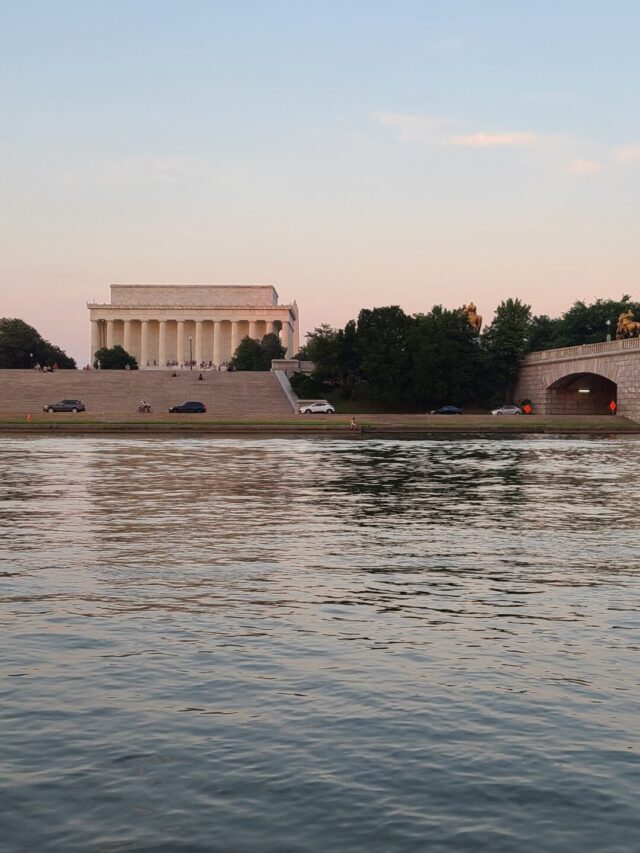
Cruise the Potomac on a Private Boat Tour
Washington, DC is often the most beautiful from the water. Away from the busy hum of city life, a cruise on the water can be a great escape without leaving the area. And Jerry Lee, Captain of Reflections DC, is ready to take guests on a new kind of boat tour. Unlike most boat tours,…

Love to read? Prefer the movie or TV series? Either way, see how your next binge can make a difference.
Smithsonian Museum Guide: Museums and Galleries on the National Mall
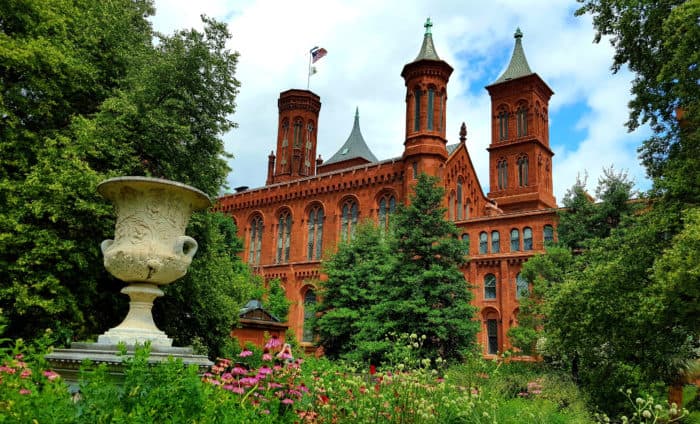
In this Article
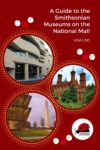
For more than 150 years, the Smithsonian Institution’s collection of world-class museums has attracted millions of visitors from around the world. Here is a complete guide to the Smithsonian museums, galleries, and gardens on the National Mall in Washington, DC.
I always chuckle when folks describe their ideal itinerary for a trip to Washington, DC and say that they want to spend a day visiting the Smithsonian museum. Little do they realize that the Smithsonian Institution is just that, an institution! And it’s way more than a single, world-renowned museum. It’s a collection of museums, galleries, and even a zoo! So how do you start to break down what you want to see at the Smithsonian museums, galleries, or National Zoo when you visit Washington, DC? Fear not! This complete guide to visiting the Smithsonian will help!
Sage Advice: These are the best places to stay in Washington DC based on your travel itinerary .
Museum exhibit designers classify visitors into three types: streakers, strollers, and studiers .
- Streakers are typically at a museum because someone else in their party wants to be. Not them. They may glance at a few pieces, but their hearts are generally not into the experience.
- A stroller is someone with a moderate interest in the topic, region, or other aspects of the exhibit. They are the museum equivalent of someone who picks up a magazine and casually flips through the pages looking at the photos, reading the captions, and skimming the articles until they stop and read a piece fully.
- And a studier will carefully absorb every detail of an exhibit, from reading every word on the signage to carefully examining each piece on display.
Even if you are a streaker, I think you’d be hard-pressed to walk every inch of the National Mall museums in a single day. As a stroller myself, I think you can successfully tackle two Smithsonian museums a day and feel like you did it justice. But if you’re a studier, you’ll likely want one full day per museum.
Sage Advice: Funded by a private trust fund and American taxpayers, there is no admission fee to experience any of the Smithsonian museums, galleries, or the National Zoo. But some museums may only be accessible with a little advanced planning and a timed-entry ticket. For the smoothest experience, check each individual museum website before you visit.

Have You Visited the Smithsonian?
Share your favorite photo with me by tagging @sagescott.kc on Instagram and using the hashtag #everydaywanderer
To help offset the costs of running EverydayWanderer.com, you’ll find affiliate links lightly sprinkled throughout the site. If you choose to make a purchase via one of these links , there’s no additional cost to you, but I’ll earn a teeny tiny commission. You can read all of the legal blah blah blah (as my little niece says) on the full disclosure page .
About this Guide to the Smithsonian
This guide to the Smithsonian starts with the Smithsonian Visitor Center and then loosely follows a counter-clockwise fashion around the National Mall. Simply walking from the Smithsonian Castle to the other nine museums listed in this guide is a 2.4-mile undertaking. Add in the distance you’ll walk exploring each museum, and that distance quickly grows longer.
Sage Advice: Explore Washington DC beyond the National Mall museums with this interactive scavenger hunt of DC .
Map of the National Mall Museums
How to Use This Map
- Zoom in or out using the + and – keys in the bottom right corner.
- Click the “More options” text link in the upper left corner to open this embedded map in a new browser window and take advantage of more options including the ability to send these directions to your phone.
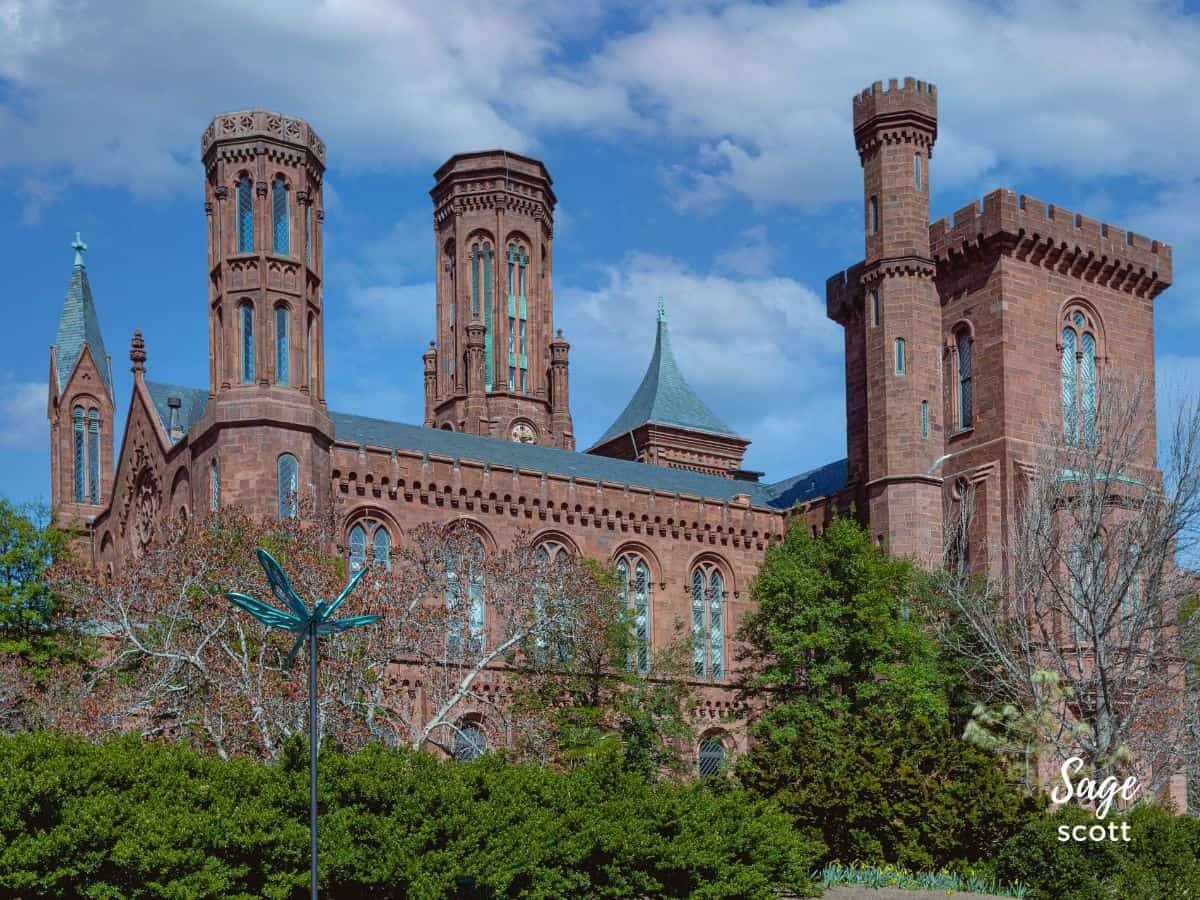
The Smithsonian Institution Building (AKA The Castle)
1000 Jefferson Dr. SW Hours of Operation: 8:30 am to 5:30 pm daily (except December 25)
Kicking off this complete guide to the Smithsonian museums on the National Mall is the Smithsonian Visitors Center. Designed by architect James Renwick, Jr., the Smithsonian Institution red sandstone building looks like a 12th-century castle in Normandy, France. Thus, its nickname, the Castle.
The Castle is the perfect place to begin your Smithsonian Institution experience because a crypt just outside the north entrance to the Castle contains the tomb of James Smithson. And if it weren’t for James Smithson, there probably wouldn’t be a Smithsonian Institution.
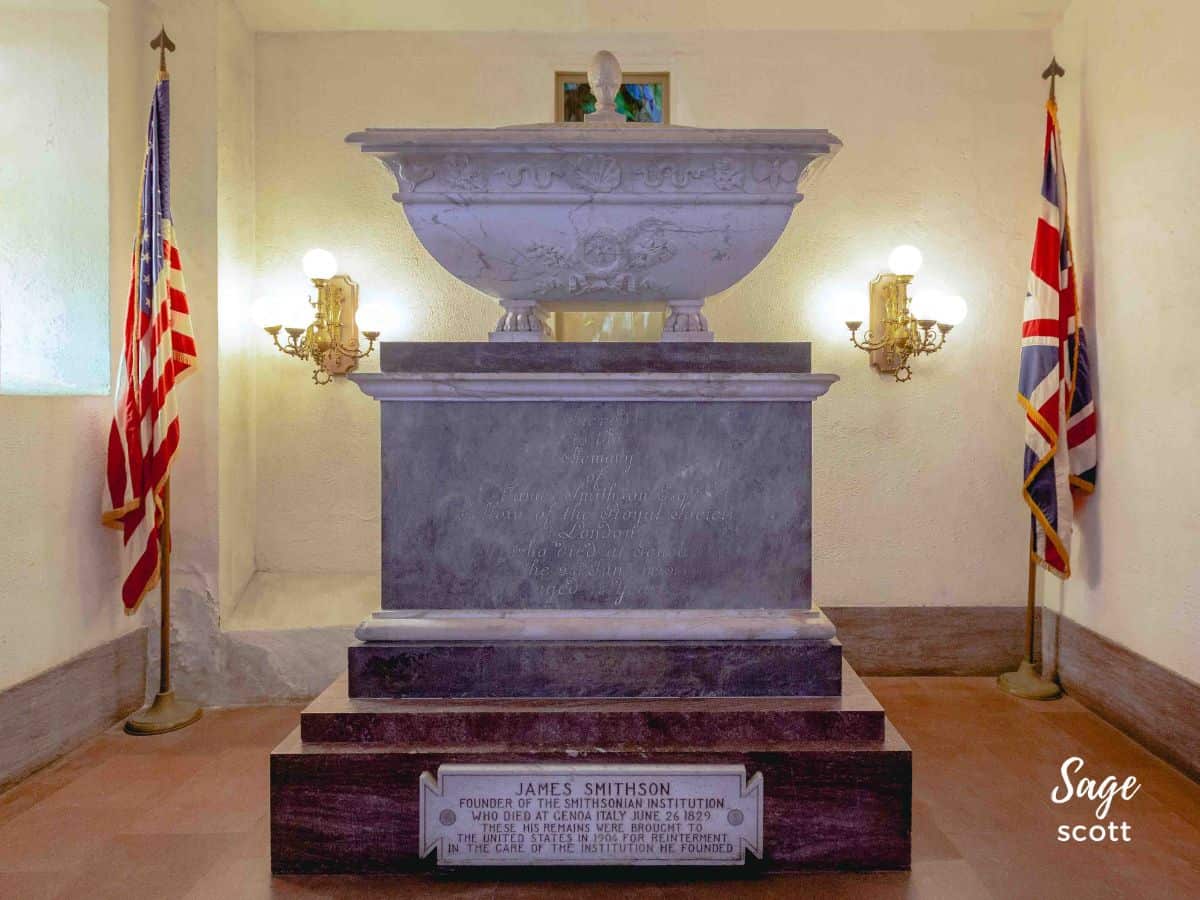
Born out of wedlock in Paris and raised in England, James Smithson was an 18th-century English chemist and mineralogist. Smithson never married nor had children, so his entire estate was left to his nephew. However, if Smithson’s nephew were to die without heirs (which is exactly what happened when he perished in 1835), then Smithson’s worldly possessions were to be used to “found in Washington, under the name of the Smithsonian Institution, an establishment for the increase and diffusion of knowledge among men.”
Fun Fact: Although James Smithson stipulated that the Smithsonian Institution be founded in Washington, DC, the scientist had never actually visited the United States. How lucky for us!
In addition to paying homage to James Smithson, use your time at the Smithsonian Castle to get an overview of the collections at each of the Smithsonian museums and chat with in-house experts to fine tune your Smithsonian experience.
Related Article: Helpful Tips for Visiting the Smithsonian Museums
Freer gallery of art and the arthur m. sackler gallery (aka the national museum of asian art).
1050 Independence Ave, SW Hours of Operation: 10:00 am to 5:30 pm daily (except December 25)
Heading southwest from the Smithsonian Castle, this guide to the Smithsonian takes you to the Freer and Sackler Galleries of Art. Together, they form the Smithsonian’s National Museum of Asian Art. Thanks to the generous donation of Charles Lang Freer’s collection of Asian and American art, the Freer Gallery was the first art museum in the Smithsonian Institution when it opened to the public in 1923.
If you plan to visit the National Museum of Art’s Freer Gallery or Sackler Gallery, don’t miss the recently restored Peacock Room. Originally a dining room in an English mansion in London, the Peacock Room is now a work of art in Washington, DC. Blending rich blue, green, and gold tones with ceramics from Syria, Iran, Japan, China, and Korea, the Peacock Room continues to prove Freer’s belief that “all works of art go together, whatever their period.”
As additional time and interest permits, explore other collections of American, Egyptian, Islamic, Chinese, Himalayan, Japanese, Korean, Near Eastern, and Southeastern Asian Art at the National Museum of Asian Art.
Enid A. Haupt Garden
950 Independence Ave., SW Hours of Operation: 7:00 am to 7:00 pm daily (except December 25)
As you travel between the Sackler Gallery and the Smithsonian National Museum of African Art, don’t miss the opportunity to stroll through the four-acre Victorian garden. The garden’s namesake, Enid A. Haupt, provided the $3 million endowment to construct and maintain the garden.
Fun Fact: The Haupt family built its wealth in publishing and included TV Guide and Seventeen in their list of publications.
The Haupt Garden is actually three separate gardens, all located on the rooftops of Smithsonian museums:
- The Parterre. Organized around a parterre , a series of symmetrical flower beds and walking paths, the Parterre reminds me of the gardens surrounding most castles in France.
- Moongate Garden. Inspired by the gardens and architecture of the Temple of Heaven in Beijing, China, the Moongate Garden is a peaceful, Zen-like experience.
- Fountain Garden. And returning to Europe, the Fountain Garden is designed to look like the Court of the Lions at Alhambra, a 13th-century palace in Granada, Spain.
Enjoying This Article?
Sign up for the newsletter!
Thank You for Subscribing!
Museum of African Art
950 Independence Ave., SW H ours of Operation: 10:00 am to 5:30 pm daily (except December 25)
Started as a privately funded collection in 1964, once it was transferred to the Smithsonian Institution in 1979, the Museum of African Art contained roughly 8,000 sculptures, costumes, books, maps, photographs, and other objects.
Fun Fact: Between the African Art Museum and the Hirshhorn Museum is the second oldest building in the Smithsonian Institution. Although the Arts and Industries Building doesn’t currently house any Smithsonian exhibits, it was designated a National Historic Landmark in 1971 and was the site of an inaugural ball for President James A. Garfield, POTUS #20.
Hirshhorn Museum and Sculpture Garden
Independence Ave and 7th St. Hours of Operation: M useum – Open daily from 10:00 am to 5:30 pm (except December 25). Plaza – Open daily from 7:30 am to 5:30 pm (except December 25). Sculpture Garden – Open daily from 7:30 am to dusk (except December 25)
Sage Advice: The Hirshhorn Museum offers free, 45-minute tours daily at 12:30 and 3:30.
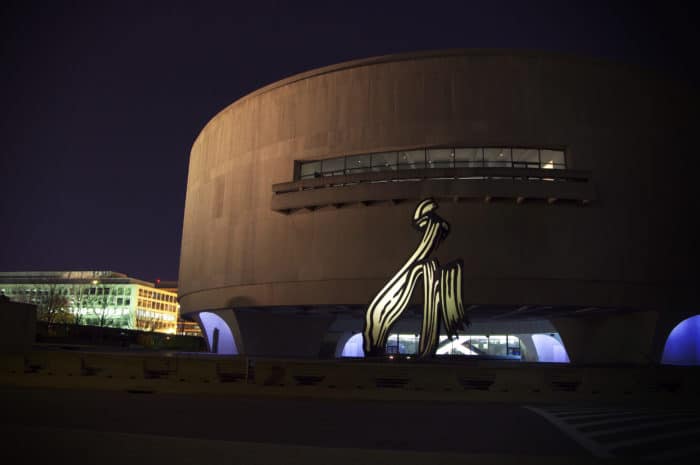
The large, circular building that looks like a car air filter on legs is the Hirshhorn Museum. It sits almost equally between the Washington Monument on the west side of the National Mall and the US Capitol Building on the right and includes a sunken sculpture garden. It is named after Joseph H. Hirshhorn who achieved success by investing in uranium-mining businesses. When he sold his interests in 1955, he earned more than $50 million. With this money, Hirshhorn expanded an already impressive collection of classic French Impressionists to include many other works of art.
Fun Fact: Although most of the funding for the museum that bears his name was via federal funds, Hirshhorn ultimately contributed $1 million toward the building’s construction.
With its large collection of 12,000 works of modern and contemporary art in the forms of paintings, photographs, and sculptures, the Hirshhorn is a great art museum for kids. (Or adults who are less inclined to visit an art museum.)
Related Article: 5 Tips to Help Kids of All Ages Appreciate Art Museums
After you’ve explored the outside of the Hirshhorn Museum, don’t overlook the sculpture garden. Sunk below street level (thanks to those “legs” that hold up the building), the circular inner core of the car air filter-shaped building holds an acre of sculptures in a manicured courtyard with a fountain. Don’t miss Rodin’s The Burghers of Calais or Yoko Ono’s (yes, THAT Yoko Ono) Wish Tree for Washington, DC .
National Air and Space Museum
600 Independence Ave. SW Hours of Operation: 10:00 am to 5:30 pm daily (except December 25)
Sage Advice: The National Air and Space Museum offers free, 90-minute tours daily at 10:30 am and 1:00 pm.
Kicking off the second half of this guide to the Smithsonian National Mall museums is the National Air and Space Museum . With more than 20 galleries in a 161,000 square foot museum, the National Air and Space Museum is the largest in the Smithsonian Institution’s portfolio. And with more than eight million visitors annually, the National Air and Space Museum is not only the most popular of the Smithsonian museums, it’s actually the most visited museum in the entire United States! Its collection of aircraft, artwork, instruments, uniforms and more is fully dedicated to the history of flight and exploring beyond planet Earth.
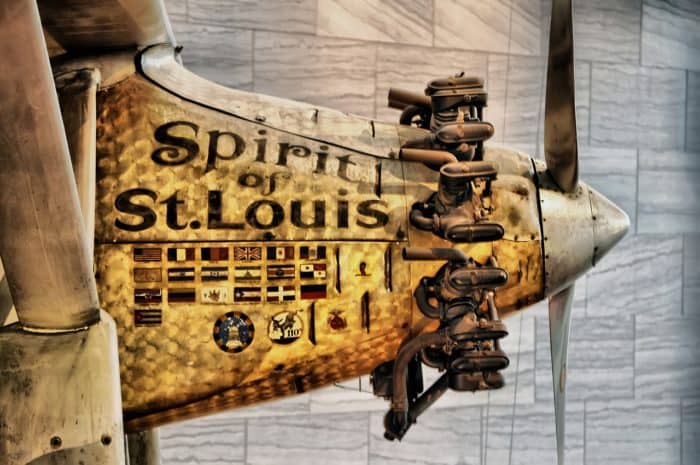
Visit the National Air and Space Museum to see historic objects like:
- America’s first airplane. See the 1903 Wright Flyer flown by Orville and Wilbur Wright in Kitty Hawk, North Carolina back in 1903.
- The Spirit of St. Louis. After successfully crossing the Atlantic Ocean between New York and Paris in 1927, pilot Charles Lindbergh flew his craft from St. Louis to Washington, DC the following spring and presented it to the Smithsonian Institution.
- Apollo 11 command module. This is the trapezoid-shaped unit that the three Apollo 11 astronauts used to return to space after walking on the Earth’s moon .
- Astronaut food. Far from a five-star meal, the Apollo 11 astronauts enjoyed silver packets of dehydrated food.
Sage Advice: Away from the National Mall, the Air and Space Museum at the Udvar-Hazy Center near Dulles Airport in Chantilly, Virginia, houses even more amazing sights. See more about it below.
When you visit, don’t overlook other experiences like:
- Watching a movie in the IMAX theater or attending a show in the planetarium
- Seeing a demonstration or attending a storytime
- Experiencing the thrill of flight in a virtual reality simulator
National Museum of the American Indian
4th St SW & Independence Ave. Hours of Operation: 10:00 am to 5:30 pm daily (except December 25)
This guide to the Smithsonian now brings you to the southeastern most Smithsonian museum on the National Mall. As you approach the National Museum of the American Indian, you’ll immediately note that the building is quite unique from the others in the Smithsonian Institution.
With a team of Native Americans leading its design, the five-story, curved building looks like natural rock shaped by the elements of wind and water over thousands of years. Every aspect of the museum is intended to reinforce the oneness that the indigenous people have with the planet. Donna E. House, the Navajo and Oneida botanist who supervised the museum’s landscaping explained the approach by saying, “We are the trees, we are the rocks, we are the water. And that had to be part of the museum.”
Sage Advice: If you’re in New York, you can visit a second National Museum of the American Indian. Housed in the Alexander Hamilton US Custom House at One Bowling Green.

A collection of more than 800,000 objects and 125,000 photographs is on display at the National Museum of the American Indian. It represents the history and culture of a wide range of indigenous people from both North and South America. The galleries are organized into areas dedicated to people from the Amazon, Andes, Arctic and Subarctic, California, Mesoamerican and Caribbean, Northwestern Coast, Patagonia, Plains and Plateau, and Woodlands regions.
Native Americans also manage the daily operations of the museum, and they work hard to ensure that visitors will experience something quite different from museums of European and Euro-American culture when they visit. One example of this is the Mitsitam Native Foods Cafe inside the National Museum of the American Indian. Offering a seasonal, Native American-inspired menu, the museum cafeteria is divided into regions like the Northern Woodlands and Great Plains. Visitors can enjoy wild salmon, bison, Indian fry bread tacos, prickly pear mole, and other unique choices.
Fun Fact: More than 20,000 native Americans, from the 48 contiguous states, Alaska, and Hawaii attended the museum’s inauguration in September 2004. It was the largest gathering of indigenous people in Washington, DC to date.
Sage Advice: While not part of the Smithsonian Institution, don’t overlook the National Gallery of Art which includes the East Building, the West Building, and a sculpture garden.
National Museum of Natural History
10th St. & Constitution Ave. Hours of Operation: 10:00 am to 5:30 pm daily (except December 25)
The National Museum of Natural History is the second-most popular museum in the Smithsonian Institution after the National Air and Space Museum. It houses more than 126 million specimens of animals, plants, minerals, rocks, and other objects.
View this post on Instagram Long line to get into the Natural History Museum, but it will be worth it! A post shared by TJ and Trey (@t.n.t.adventure) on May 27, 2018 at 11:50am PDT
When you visit the National Museum of Natural History , you won’t want to miss the following:
- Dinosaurs. From the tyrannosaurus rex skull on the first floor to scientists at work in the FossiLab on the second floor, the National Museum of Natural History will satisfy any budding paleontologist in your travel group.
- Hall of Human Origins. One of the museum’s newer collections, the Hall of Human Origins, opened in 2010 on its 100th anniversary. With a focus on human evolution, this gallery explores the Earth’s earliest humans through the impact today’s people are having on the planet.
- Hall of Mammals. Organized by continent, from the savannas of Africa to the ice shelves of the Arctic, the National Museum of Natural History’s Hall of Mammals has more than 250 preserved specimens.
- National Gem and Mineral Collection. With the Hope Diamond, a 45-karat blue diamond, and more than 15,000 other gems, 350,000 minerals, and 35,000 meteorites, the museum’s collection is one of the largest in the world.
Wrap up your visit to the Museum of Natural History with a stroll through the Butterfly Pavilion. A timed-entry ticket is required for this live butterfly experience, and admission is approximately $7 per person with discounts offered to children and seniors.
Sage Advice: The Butterfly Pavilion is free on Tuesdays, but a timed entry ticket is still required. So plan ahead!
National Museum of American History
- Star-Spangled Banner. On the second floor, you can see the original flag flown at Fort McHenry during the War of 1812. As you might recall from elementary school history, these stars and stripes inspired Francis Scott Key to pen the song that would become our national anthem.
- First Lady Fashion. From bustles to beaded bodices, sewn from silks and satins, experience 200 years of fashion trends in this gallery featuring the ball gowns worn by America’s First Ladies.
- Bon Appétit! Explore the kitchen of Julia Child, the California-born chef who brought French cuisine to the American public.
National Museum of African American History and Culture (NMAAHC)
1400 Constitution Ave, NW Hours of Operation: 10:00 am to 5:30 pm daily (except December 25)
Wrapping up this guide to the Smithsonian museums on the National Mall is the National Museum of African American History and Culture, also known as the NMAAHC. After nearly 100 years in the making, the NMAAHC opened its doors on September 24, 2016. It remains the only national museum dedicated to the history and culture of African Americans. Over 85,000 square feet and five floors, the museum covers important historical topics like slavery, segregation, and civil rights as well as cultural topics like the arts, community, and religion.
View this post on Instagram One Shot Wanders - The relatively new Smithsonian Museum of African American History and Culture is wonderful on the inside and the outside. #carolinegilmore #oneshotwanders #washingtondc A post shared by Caroline Gilmore (@carolinegilmore_1) on May 27, 2018 at 12:07pm PDT
On the National Mall where each Smithsonian Museum’s architectural design appears to be as intentional as the collections inside it, the NMAAHC is no different. I found myself mesmerized by the three tiers of detailed, metal lattice inspired by the iron grilles found in the African American communities in Charleston, South Carolina and New Orleans, Louisiana.
Consistent with all of the other Smithsonian Museums, there is no admission fee. But the free, timed-entry passes are one of the hottest tickets in Washington, DC. The best way to visit the NMAAHC is to plan ahead and score Advance Online tickets, but there are a few other options you can try .
View this post on Instagram Fifty years ago today, Dr. Martin Luther King Jr. was assassinated in Memphis, Tennessee. King had been working to organize the Poor People’s Campaign, a movement to confront poverty as a human rights issue, and had given a speech the day before when he said, "I've been to the mountaintop [and] I've seen the promised land"—words and deeds that left a lasting legacy. Four days later, Coretta Scott King led a massive, peaceful march in Memphis that honored her husband’s memory by supporting the striking sanitation workers whose cause had drawn King to the city. In this @nmaahc photo, participants carry signs that demand "HONOR KING: END RACISM" and "UNION JUSTICE NOW!" A post shared by Smithsonian (@smithsonian) on Apr 4, 2018 at 1:00pm PDT
If you are lucky enough to land a ticket to the NMAAHC when you visit Washington, DC, you won’t want to miss:
- Rare Photo of Harriet Tubman. Escaped slave turned conductor of the Underground Railroad , Tubman’s contributions to history are significant.
- Louis Armstrong’s Trumpet. With a career that spanned five decades, Louis Armstrong was one of the most influential jazz musicians of the 20th century. See one of his brass trumpets on display at NMAAHC, and when you visit, look for his name engraved in script along the leadpipe.
- Signs of Segregation. From a “colored” drinking fountain to a bus sign from Nashville, Tennessee, signs of segregation that still divided the nation long after the Civil War are on display. Visitors can also see the dress Rosa Parks was sewing the day she refused to give up her bus seat to a white man in Montgomery, Alabama.
- The Champ. See the boxing gloves and headgear worn by one of the world’s most accomplished boxers, Muhammad Ali.
Related Article: Must-See Destinations to Learn About Black History
Sage Advice: While it’s also not part of the Smithsonian Institution, the United States Holocaust Memorial Museum located directly across the National Mall from the National Museum of African History and Culture does an outstanding job of presenting this dark period in world history. If you plan to visit this museum, it’s worth it to pay a $1 per ticket convenience fee to guarantee your timed-entry ticket to the permanent collection.
Frequently Asked Questions About the National Mall Museums
How many smithsonian museums are there.
There are 13 Smithsonian museums, galleries, and gardens located on the National Mall in Washington, DC. There are additional museums outside the National Mall in Washington, DC, (including the National Zoo ). And there are two Smithsonian museums in New York City.
Are All Smithsonian Museums Free?
Yes! There is no admission fee at any Smithsonian museum, gallery, garden, or zoo.
What are the Smithsonian's Hours?
Hours of operation for the National Mall museums vary. Please find the operating hours for each Smithsonian Museum listed above.
Have You Visited Any of the Smithsonian Museums on the National Mall?
Which museums, exhibits, or artifacts did you enjoy the most? Is there anything missing from this guide to the Smithsonian museums on the National Mall? If you haven’t been to a Smithsonian Museum yet, what is at the top of your travel bucket list? Share your thoughts in the comments section below.
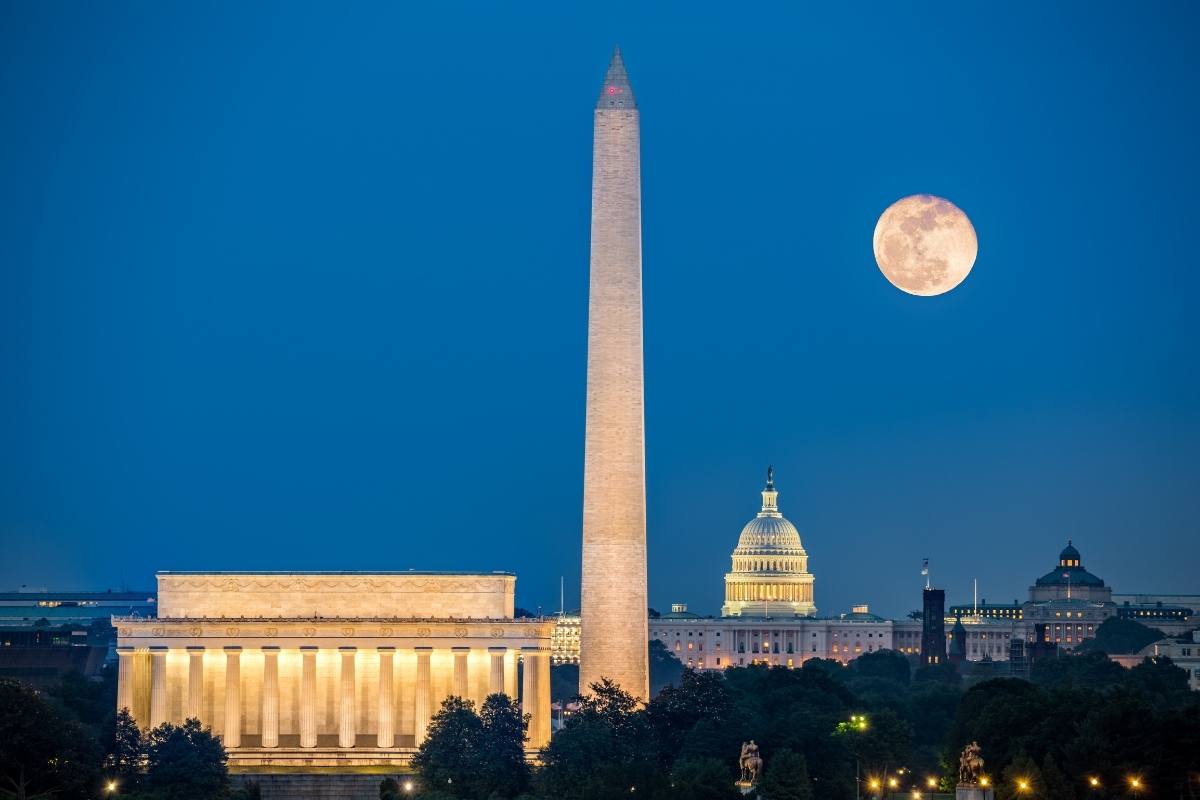
Looking for more information to plan your Washington DC vacation? Check out my additional recommendations to help you plan your trip to Washington, DC , including what to see and do in Washington DC, the best places to stay in Washington DC, where to eat in Washington DC, and more!

Ready to Go? Use These Helpful Links to Book Your Trip!
- Find low fares with airfarewatchdog and Skyscanner
- Book your plane ticket with Expedia or Kayak
- Or take the scenic route on an epic road trip in a rental car or an RV from Outdoorsy
- From hotels to private homes, find the perfect accommodation with Hotels.com or Vrbo
- Travel in style with a suitcase, carry-on, backpack, or handbag from eBags
- Save on tickets to attractions, sightseeing tours, and more with CityPASS , Tiqets , and Viator
- Don’t leave home without travel insurance from AXA
- Discover the sights, history, and culture of your destination with an interactive scavenger hunt
- Need something else to plan your perfect trip? Visit my travel resources page for more trusted partners. Happy wandering!
Thank you for sharing!
21 thoughts on “Smithsonian Museum Guide: Museums and Galleries on the National Mall”
Wow! So many…I did not know. I haven’t visited anyone of them and look forward to doing so. Excellent write-up with complete information for any travellers to plan a trip to the Smithsonian Museum on the mall.
Wow, amazing that these are free! So much to see, do, and learn. Thanks for this comprehensive guide, I especially love your fun facts 🙂
Thanks for sharing a very helpful guide on Smithsonian museums with all pro tips. I went to its Natural Air Space museum and loved all the shows and displays. I would love to see their other museums when I visit Washington DC next time.
That’s an excellent choice. After all, it’s one of the most popular Smithsonian museum with good reason!
I wasn’t aware of Smithsonian museums at all! Now I have learnt from the blog that they are the most widely visible part of the US. They have so many museums and I guess most of them are located in Washington DC, and again most of them in the National Mall. This is surely going to my DC itinerary.
Oh, yes, you can’t go to Washington, DC, and not visit at least ONE Smithsonian museum!
I was so thrilled to read this thorough post as I learned A LOT! I have always heard of the Smithsonian but had no idea what it entailed. I think I would like to start with the National Museum of American History (Dorothy’s slippers and Julia’s kitchen…) and also would find the NMAAHC fascinating and educational. Thank you. Pinned for future use!
Two great choices! There are a lot of nostalgic, “feel good” exhibits at the Museum of American History. And the NMAAHC is a heartbreaking, but necessary, walk through a shameful period of American history. You could spend a week exploring just the museums on the National Mall and still not see them all!
Whoa! That is a long list of museums. And here I was planning a couple of days for museums in the city. But what a great round-up, making choices will be so much simpler with this guide.
I think you could dedicate a full week to just the Smithsonian museums on the National Mall and still not see all of them!
Such a thorough guide of the museums, helpful to anyone who is looking to go there. I especially liked the facts your spread throughout your post. It seems it requires a great deal of time to visit as there is just so much to offer. I think I would enjoy the upcoming Julia Child exhibit. I would love to see her kitchen.
Julia’s kitchen was so incredibly cool. And reading your comment makes me want to watch Julie & Julia again! <3
So cool that Smithsonian museums are a collection of museums, galleries, and zoo. Your comprehensive guide with tips is great. I don’t think anybody can do justice by visiting it for a day! If I ever go there, my top must visits would be the Castle and Zoo!
You could spend a week and still not see everything at the Smithsonian museums in DC! Your top two choices are great ones!
I had little knowlege of the history behind the name Smithson until now. I thought it was very interesting that he had no heirs, neither his nephew, and that he never even lived in the US. I really need to make a week long trip to visit all these amazing museums. I was surprised to see the photo of the long lines at the Museum of Natural History. I’m sure it’s worth the wait tho!
Lucky us here in the US, right?!? Every exhibit I’ve seen at the Smithsonians are amazing. You’ll be impressed!
I really had no idea that the Smithsonian was made up of so many pieces. Your guide is fantastic in laying it all out because it would be so consuming to try and see it all. Me personally, I’d put The Castle at the top of my list.
I think you could spend a week tackling just the Smithsonian museums on the National Mall and still not see it all. The Castle is the perfect place to kick off a visit to the Smithsonian, so good choice! 🙂
I had no idea that Smithson never lived in the US. Definitely lucky for us then! I have been to DC several times and visited a few of the museums that help make up the Smithsonian. By far my favorites (and obviously the two most popular) were the Air and Space Museum and the Natural History Museum. This is a very thorough guide that is quite useful whether it’s your first time or you 20th time! I am saving it for when I go back!
Yes, we Americans are so lucky! Your two favorites are two very good ones. From what I know about your travel interests (I LOVE reading your articles), I recommend the National Museum of American History your next trip to DC. You’ll be able to see the flag flown over Fort McHenry that inspired Francis Scott Key to pen the Star Spangled Banner. There is a really cool exhibit on First Lady Fashion, Julia Child’s kitchen, and so much more.
I wasn’t aware of all these! Great info! I flipped this and re-tweeted it!
Leave a Comment Cancel Reply
Your email address will not be published. Required fields are marked *
Get the latest articles delivered to you!
Thank You! You have successfully joined our subscrib er list.
MEET SAGE CONTACT US MEDIA KIT
DESTINATIONS
Travel interests.
ANIMAL ENCOUNTERS FOOD AND WINE GREAT OUTDOORS MUSEUMS AND MORE NATIONAL PARK SYSTEM ROADSIDE ATTRACTIONS SEASONAL TRAEL STREET ART TRAVEL PLANNING
TRAVEL RESOURCES
COMPANIES I USE TRAVEL GUIDES
LET'S CONNECT!

Disclosure Statement
To help offset the costs of running EverydayWanderer.com, you’ll find affiliate links lightly sprinkled throughout the site. If you choose to make a purchase via one of these links , there’s no additional cost to you, but I’ll earn a teeny tiny commission. You can read all of the legal blah blah blah (as my little niece says) on the full disclosure page .
Copyright © 2023 | Made with love in Kansas City by Sage Scott | Privacy Policy
@michellefortephotography
Visiting the Smithsonian National Museum of Natural History in Washington, DC
Explore the natural world around you, discover dinosaur fossils and more at this free gem on the national mall..
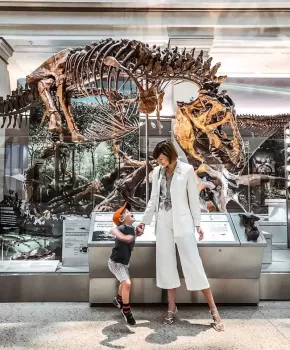
@districtofchic
Planning your visit to the Natural History Museum
The Smithsonian National Museum of Natural History opened in 1910 to invoke discovery and education of the natural world. Its green dome and immense size (comparable to 18 football fields) are signatures, as well as the 140 million-plus natural science specimens and cultural artifacts that the museum contains.
The Museum of Natural History is centrally located in Washington, DC on the National Mall . Like all Smithsonian Institution museums , admission is free. Its regular hours are 10 a.m. – 5:30 p.m., but hours are extended during the spring and summer with a closing time of 7:30 p.m. The museum is open every day of the year except Dec. 25. The most convenient way to reach the museum is via public transportation. Public parking is scarce, but there are parking spaces available for visitors with disabilities. If using Metrorail , take the Orange or Blue lines to the Smithsonian station and use the Mall exit. If taking Metrobus, use the 32, 34 or 36 routes.
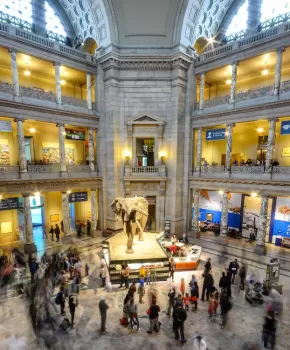
@ray.payys
What’s inside the National Museum of Natural History?
The museum contains some of the most famous artifacts in the world. The Janet Annenberg Hooker Hall of Geology, Gems and Minerals has the supposedly cursed Hope Diamond on display. Meanwhile, Q?rius , the museum’s education center, offers teens and tweens a lab where they can make their own scientific discoveries.
After a five-year renovation, the museum has reopened its David H. Koch Hall of Fossils. The 31,000-square-foot exhibit’s theme is Deep Time , borrowed from a scientific phrase that illustrates how Earth’s history has played out over billions of years. Prepare to be amazed, overwhelmed, engaged and dazzled by one of the biggest exhibitions to come to DC in years.
Other permanent exhibits include an insect zoo and The Sant Ocean Hall , which features an exact replica of a living North Atlantic right whale.
More About DC
You may also like..
80+ Things to Do This May in Washington, DC
Things to Do This Weekend in Washington, DC
Things to Do This Week in Washington, DC
- Asia-Pacific
- Australia & Oceania
- Middle East
- North America
- Family Travel
- Food & Drink
- Luxury Travel
- Picture This
- Sports & Recreation
- Travel Tips
- IHG Rewards Club
- Book your getaway
The ultimate guide to all 19 Smithsonian Museums
The world’s biggest museum and research facility — the Smithsonian Institution — is every art, history or culture lovers dream. With 19 museums and galleries, as well as the National Zoological Park , the Smithsonian has something for everyone to appreciate and learn from.
Two of the museums are in New York City, while several others are within walking distance of one another on the National Mall in Washington D.C. and a few are just located in the metro area. The District is a fantastic place to visit because of its rich American history, accessible subway system and hospitable hotels in and around the D.C. area .
The Smithsonian offers guided tours, various exhibitions and events, and hands-on activities for people of all ages. All museums have free admission, except for the Cooper-Hewitt Museum in NYC, which requires an entry fee.
1. National Museum of African American History and Culture
Source: Flickr
Hours: 10:00 a.m. — 5:30 p.m. daily, closed December 25. Location: 14 th St. and Constitution Avenue NW
This museum became the 19 th of the Smithsonian Institution museums after being established in 2003. The National Museum of African American History and Culture is the only national museum completely devoted to African American art, history, life and culture and opened a glorious new multi-floor facility in the fall of 2016.
2. National Museum of African Art
Source: Facebook
Hours: 10:00 a.m. — 5:30 p.m. daily, closed December 25. Location: 950 Independence Avenue SW
The National Museum of African Art features exhibits from the continent of Africa. Contemporary and traditional art is on display for people to see, admire and be inspired by. This museum lets those from around the world learn about the African culture from its finest pieces of art.
3. National Air and Space Museum
Hours: 10:00 a.m. — 5:30 p.m. daily, closed December 25. Location: Independence Avenue, 6 th Street SW
To those interested in space and air travel, this one’s a must see. At the National Air and Space Museum visitors have the chance to explore 23 galleries exhibiting thousands of aviation and space artifacts, including missiles, rockets and various types of planes.
4. National Air and Space Museum, Steven F. Udvar-Hazy Center
Hours: 10:00 a.m. — 5:30 p.m. daily, closed December 25. Location: 14390 Air and Space Museum Parkway, Chantilly, Virginia
The Steven F. Udvar-Hazy Center is the companion facility of the before-mentioned museum. They offer daily tours, an IMAX theater, and special lectures and events throughout the year. The two large hangers on site — the Boeing Aviation Hangar and the James S. McDonnell Space Hangar — showcase thousands of aviation and space pieces, including the space shuttle Discovery .
5. Smithsonian American Art Museum
Hours: 11:30 a.m. — 7:00 p.m. daily, closed December 25. Location: 8 th Street, F Street NW
Come here for beautiful American artwork. Learn about the true American experience and way of life from the colonial period up until today through folk art, decorative arts, paintings, photographs and sculptures at the Smithsonian American Art Museum .
6. National Museum of American History
Hours: 10:00 a.m. — 5:30 p.m. daily, closed December 25 Location: 1300 Constitution Avenue NW
Go back in time at the National Museum of American History to discover and explore the complexity of American history. Through exhibits and events, visitors come to better understand the cultural, social, technological and political developments of the United States.
7. National Museum of the American Indian
Hours: 10:00 a.m. — 5:30 p.m. daily, closed December 25. Location: 4 th Street, Independence Avenue SW
At the Washington, D.C. location, the National Museum of the American Indian holds a massive collection of artifacts about the Native American culture. The architecture of the museum, as well as its exhibitions, are designed and focused around various Indian tribes and communities from around the globe.
8. Anacostia Community Museum
Hours: 10:00 a.m. — 5:00 p.m. daily, closed December 25. Location: 1901 Fort Place SE
Deep thinkers, knowledge seekers and community activists will thoroughly enjoy this Smithsonian museum. The Anacostia Community Museum is committed to critical thinking about issues impacting America and bringing people together around shared community problems.
9. Arts and Industries Building
Hours: Currently closed for renovations Location: 900 Jefferson Drive SW
The Arts and Industries Building is the original home of the National Museum. It’s currently closed due to renovation.
10. Freer Gallery of Art
Hours: 10:00 a.m. — 5:30 p.m. daily, closed December 25. Location: Jefferson Drive, 12 th Street SW
You can find a premier collection of Asian art at the Freer Gallery of Art , but that’s not all you’ll find. It also houses American and Ancient Egyptian art, and a famous collection of artwork by James McNeill Whistler.
11. Hirshhorn Museum and Sculpture Garden
Hours: Museum 10:00 a.m. — 5:30 p.m. daily; Sculpture Garden 7:30 a.m. — dusk; closed December 25. Location: Independence Avenue, 7 th Street SW
A cylinder-shaped building with an adjoining plaza and sunken sculpture garden is what your eyes see when looking at the Hirshhorn Museum and Sculpture Garden . The modern and contemporary art displayed here is meant to give a voice to the art and artists and create meaningful experiences for those in attendance.
12. National Museum of Natural History
Hours: 10:00 a.m. — 5:30 p.m. daily, closed December 25. Location: 10 th Street and Constitution Avenue NW
Learn about the world’s scientific and cultural heritage at this museum. Exhibitions, research programs and documented collections at the National Museum of Natural History include the earliest human and animal origins. Millions and millions of insects, fish and plants reside inside this Smithsonian museum.
13. National Portrait Gallery
Hours: 11:30 a.m. — 7:00 p.m. daily, closed December 25. Location: 8 th Street and F. Street NW
Through new media, performing arts and visual arts, the story of America and those who’ve helped shaped it is told. Lives of American presidents, poets, activists, actors and visionaries are portrayed at the National Portrait Gallery .
14. National Postal Museum
Hours: 10:00 a.m. — 5:30 p.m. daily, closed December 25. Location: 2 Massachusetts Avenue NE
Are you a stamp collector? Then don’t miss out on the amazing stamp collection and the opportunity to learn about the history of the American mail service at the National Postal Museum .
15. The Renwick Gallery of the Smithsonian American Art Museum
Hours: 10:00 AM-5:30 PM daily, closed on December 25th. Location: 1661 Pennsylvania Avenue NW
The Renwick Gallery exhibits American decorative and contemporary arts and crafts from the 19 th through the 21 st centuries. It’s currently closed to the public because of a two-year renovation project. The building is projected to reopen in 2016.
16. Arthur M. Sackler Gallery
Hours: 10:00 a.m. — 5:30 p.m. daily, closed December 25. Location: 1050 Independence Avenue SW
In connection with the Freer Gallery, the Arthur M. Sackler Gallery also showcases Asian art. Featured here are temporary and permanent Asian art exhibitions from ancient to contemporary times.
17. Smithsonian Institution Building
Hours: 8:30 a.m. — 5:30 p.m. daily, closed December 25. Location: 1000 Jefferson Drive SW
Located in the Smithsonian Institution Building , better known as The Castle, are the Smithsonian Information Center and the Smithsonian Institution’s administrative headquarters. Enjoy free visitor Wi-Fi and a delicious snack at the Castle Café.
18. American Indian Museum
Hours: 10:00 a.m. — 5:00 p.m. daily, closed December 25. Location: Alexander Hamilton U.S. Custom House, New York City
The New York site of the American Indian Museum presents the life, culture and traditions of the Native American people from around the world through exhibitions, live performances and film screenings.
19. Cooper-Hewitt, Smithsonian Design Museum
Hours: 10:00 a.m. — 6:00 p.m. daily, closed December 25. Location: 2 East 91 st Street, New York City
At the Cooper-Hewitt Museum , viewpoints on the impact of design on people’s daily life are presented over exhibitions and educational programs offered onsite and online. Currently the museum is closed for renovation but is expected to reopen on December 12, 2014.
As you can see, any and everyone who visits the Smithsonian Institution finds something that interests them. Prepare to be amazed at what you see, hear and discover at each one of the Smithsonian’s 19 museums and galleries.
Washington D.C. guided tours, attractions and more
Explore choices for your next Washington D.C. trip, including guided tours of monuments and museums. Book through IHG and earn 1,000 points.
Most Popular
Recent posts.
- Six of the Hottest Miami Happy Hours Under the Sun September 23, 2021
- Dream Destination Wedding Locations in the Southeast August 5, 2021
- City Lights Series: Best Foodie Cities February 24, 2020
- City Lights Series: Best Sports Cities in the U.S. February 24, 2020
- City Lights Series: Best Culture Cities in the U.S. February 21, 2020
Previous Post Be The Readiest on Friday, April 13th with Holiday Inn Express
Next post how to get around madrid with public transportation, you may also like, six of the hottest miami happy hours under the sun, dream destination wedding locations in the southeast, fujairah: a history lover’s guide to forts and mosques, search ihg hotels.
© 2020 IHG. All rights reserved. Most hotels are independently owned and operated. AdChoices

Visit Planning
- Plan Your Visit
- Event Calendar
- Current Exhibitions
- Family Activities
- Guidelines and Policies
Access Programs
- Accessibility
- Dementia Programs
- Verbal Description Tours

Explore Art and Artists
Collection highlights.
- Search Artworks
- New Acquisitions
- Search Artists
- Search Women Artists
Something Fun
- Which Artist Shares Your Birthday?
Exhibitions
- Upcoming Exhibitions
- Traveling Exhibitions
- Past Exhibitions
Art Conservation
- Lunder Conservation Center

Research Resources
- Research and Scholars Center
- Nam June Paik Archive Collection
- Photograph Study Collection
- National Art Inventories Databases
- Save Outdoor Sculpture!
- Researching Your Art
Publications
- American Art Journal
- Toward Equity in Publishing
- Catalogs and Books
- Scholarly Symposia
- Publication Prizes
Fellows and Interns
- Fellowship Programs
- List of Fellows and Scholars
- Internship Programs
Featured Resource

- Support the Museum
- Corporate Patrons
- Gift Planning
- Donating Artworks
- Join the Director's Circle
- Join SAAM Creatives
Become a member

The Smithsonian American Art Museum has announced the appointment of 18 fellows for the 2024–2025 academic year. The museum’s program hosts fellows appointed by the Smithsonian’s Office of Academic Appointments and Internships and grants its own awards for scholars and students to pursue research at the museum, including graduate, predoctoral, postdoctoral and senior fellowships.
“Among this year’s cohort, we are particularly excited to welcome the inaugural awardees of our Audrey Flack Short-Term Fellowship, Helen Frankenthaler Foundation Fellowship and Betsy James Wyeth Fellowship in Native American Art,” said Lindsay Harris, head of the Research and Scholars Center at the Smithsonian American Art Museum. “With these three new fellowship positions, SAAM is increasing opportunities for scholars whose research expands our conception of American art.”
The 2024–2025 appointees are:
- Olivia Armandroff , University of Southern California, “Volcanic Matter: Land Formation and Artistic Creation,” George Gurney Predoctoral Fellow, Smithsonian American Art Museum and predoctoral fellow, Smithsonian Institution Fellowship Program
- Megan Baker , University of Delaware, “Crayon Rebellion: The Material Politics of North American Pastels, 1758–1814,” predoctoral fellow, Smithsonian Institution Fellowship Program
- Isaiah Bertagnolli , University of Pittsburgh, “Disarming Landscapes: Antinuclear Arts Activism in the United States,” Douglass Foundation Predoctoral Fellow, Smithsonian American Art Museum
- Charmaine Branch , Princeton University, “Black Feminist Practices of Care: Artist-Archivists Cultivating Community,” Joshua C. Taylor Predoctoral Fellow, Smithsonian American Art Museum
- Michelle Donnelly , Yale University, “Spatialized Impressions: American Printmaking Outside the Workshop, 1935–1975,” Helen Frankenthaler Foundation Predoctoral Fellow, Smithsonian American Art Museum
- Ashley E. Kim Duffey , University of Minnesota, “(Re)visioning Kinship: Photographies of U.S.–Korean Adoption since 1953,” William H. Truettner Predoctoral Fellow, Smithsonian American Art Museum and Big Ten Academic Alliance Fellow, Smithsonian Institution Fellowship Program
- Julia Hamer-Light , University of Delaware, “Part of the Continuum: Arthur Amiotte’s Fiber Wall Hangings and Lakȟóta Ecological Pedagogy, 1962–1978,” predoctoral fellow in American craft, Smithsonian American Art Museum
- Maeve M. Hogan , University of Wisconsin–Madison, “Between Utility and Art: Recovering Fiber-Based Craft Histories of the 1950s and 1960s,” predoctoral fellow in American craft, Smithsonian American Art Museum and Big Ten Academic Alliance Fellow, Smithsonian Institution Fellowship Program
- Elizabeth Keto , Yale University, “Reconstruction’s Objects: Art in the United States South, 1861–1900,” Joe and Wanda Corn Predoctoral Fellow, Smithsonian American Art Museum
- Jana La Brasca , University of Texas at Austin, “The Machine That Makes the World: Alice Aycock to Scale, 1968–1986,” Douglass Foundation Predoctoral Fellow, Smithsonian American Art Museum
- Maria de Lourdes Mariño Fernández , Temple University, “Untangling Transnational Cuba: The Cuban/Cuban American/Latinx Knot,” Audrey Flack Short-Term Predoctoral Fellow, Smithsonian American Art Museum
- Jeannette Martinez , University of New Mexico, “Visualities of Belonging: Creating ‘Terruño’ in Contemporary U.S. Central American Art (1990s–Now),” Terra Foundation for American Art Predoctoral Fellow, Smithsonian American Art Museum
- Sarah Myers , Stony Brook University, “Rage, Dissent, Hysteria: Feminist Art Collectives and Sexual Politics in 1980s New York,” Patricia and Phillip Frost Predoctoral Fellow, Smithsonian American Art Museum
- Emma Oslé , Rutgers University, “The Space In-Between: Latinx Art and the Maternal,” Terra Foundation Predoctoral Fellow, Smithsonian American Art Museum and Big Ten Academic Alliance Fellow, Smithsonian Institution Fellowship Program
- Brandon O. Scott , Massachusetts Institute of Technology, “The American Grove: A Nineteenth-Century Vegetal Aesthetic,” predoctoral fellow, Smithsonian Institution Fellowship Program
- Rachel M. Tang , Harvard University, “Lessons in Repair: Contemporary Objects, Traditions of Making, and Histories of Black and Native Schooling,” Betsy James Wyeth Predoctoral Fellow in Native American Art, Smithsonian American Art Museum
- Margot Yale , University of Southern California, “From Red Feminism to the Blacklist: Labor Schools and the Work of Art, 1935–1957,” Wyeth Foundation Predoctoral Fellow, Smithsonian American Art Museum
- Joseph Mizhakiiyaasige Zordan , Harvard University, “Tangible Sorrows: Materiality and Mourning in Colonial New York, 1688–1764,” Terra Foundation Predoctoral Fellow in American Art, Smithsonian American Art Museum
Since 1970, the museum has provided 790 scholars with financial aid, unparalleled research resources and a world-class network of colleagues. Former fellows now occupy positions in prominent academic and cultural institutions across North America, Asia, Australia, the Caribbean, Europe, Russia, the Middle East and South America.
Fellowship opportunities include the Will Barnet Foundation Fellowship for research on American modern art and its influences; the Joe and Wanda Corn Fellowship for scholarship that spans American art and American history; the Douglass Foundation Fellowship for predoctoral research; the Audrey Flack Short-Term Fellowship; the Helen Frankenthaler Foundation Fellowship for research on modern and contemporary art; the Patricia and Phillip Frost Fellowship for American art and visual culture; the George Gurney Fellowship for the study of American sculpture; the alumni-supported Joshua C. Taylor Fellowship; the William H. Truettner Fellowship for up to six months of research on American art; the Wyeth Foundation Predoctoral Fellowship for the study of excellence in all aspects of American art; and the Betsy James Wyeth Fellowship in Native American Art.
Applications for fellowships in the 2025-2026 academic year will open in September and are due by Oct. 15. Information about how to apply is available on the museum’s website or via email .
The museum maintains six online art-research databases with more than a half-million records, including the Inventories of American Painting and Sculpture that documents more than 400,000 artworks in public and private collections worldwide and extensive photographic collections documenting American art and artists. An estimated 180,000-volume library specializing in American art, history and biography is shared with the Smithsonian’s National Portrait Gallery. An active publications program of books, catalogs and the critically acclaimed peer-reviewed journal for new scholarship “American Art” complements the museum’s exhibitions and educational programs.
About the Smithsonian American Art Museum and its Renwick Gallery
The Smithsonian American Art Museum is the flagship museum in the United States for American art and craft. It is home to one of the most significant and inclusive collections of American art in the world. The museum’s main building, located at Eighth and G streets N.W., is open daily from 11:30 a.m. to 7 p.m. The museum’s Renwick Gallery, a branch museum dedicated to contemporary craft, is located on Pennsylvania Avenue at 17th Street N.W. and is open daily from 10 a.m. to 5:30 p.m. Check online for current hours and admission information . Admission is free. Follow the museum on Facebook , Instagram , LinkedIn and YouTube . Smithsonian information: (202) 633-1000. Museum information (recorded): (202) 633-7970. Website: americanart.si.edu .
Press Images
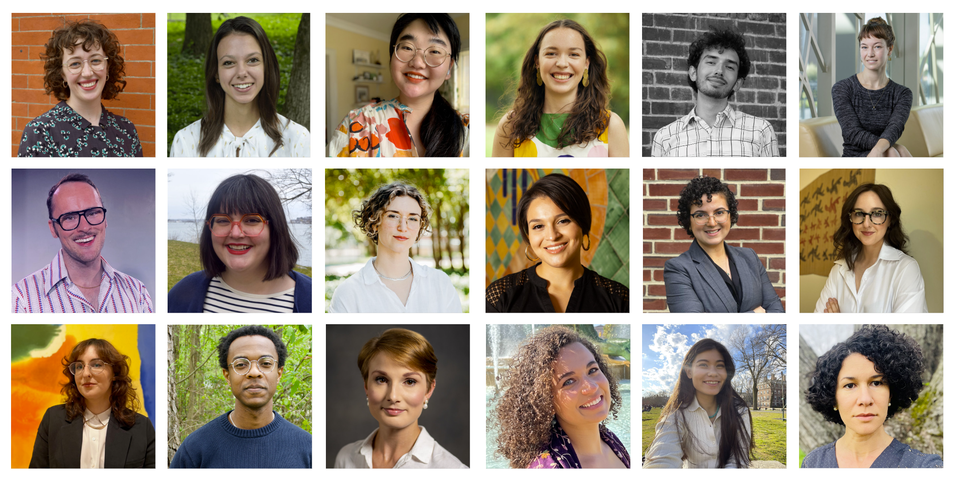
Photos courtesy of the subjects

AZ Animals (US)
These Are the 6 Best Science Museums in America
Posted: January 27, 2024 | Last updated: January 28, 2024
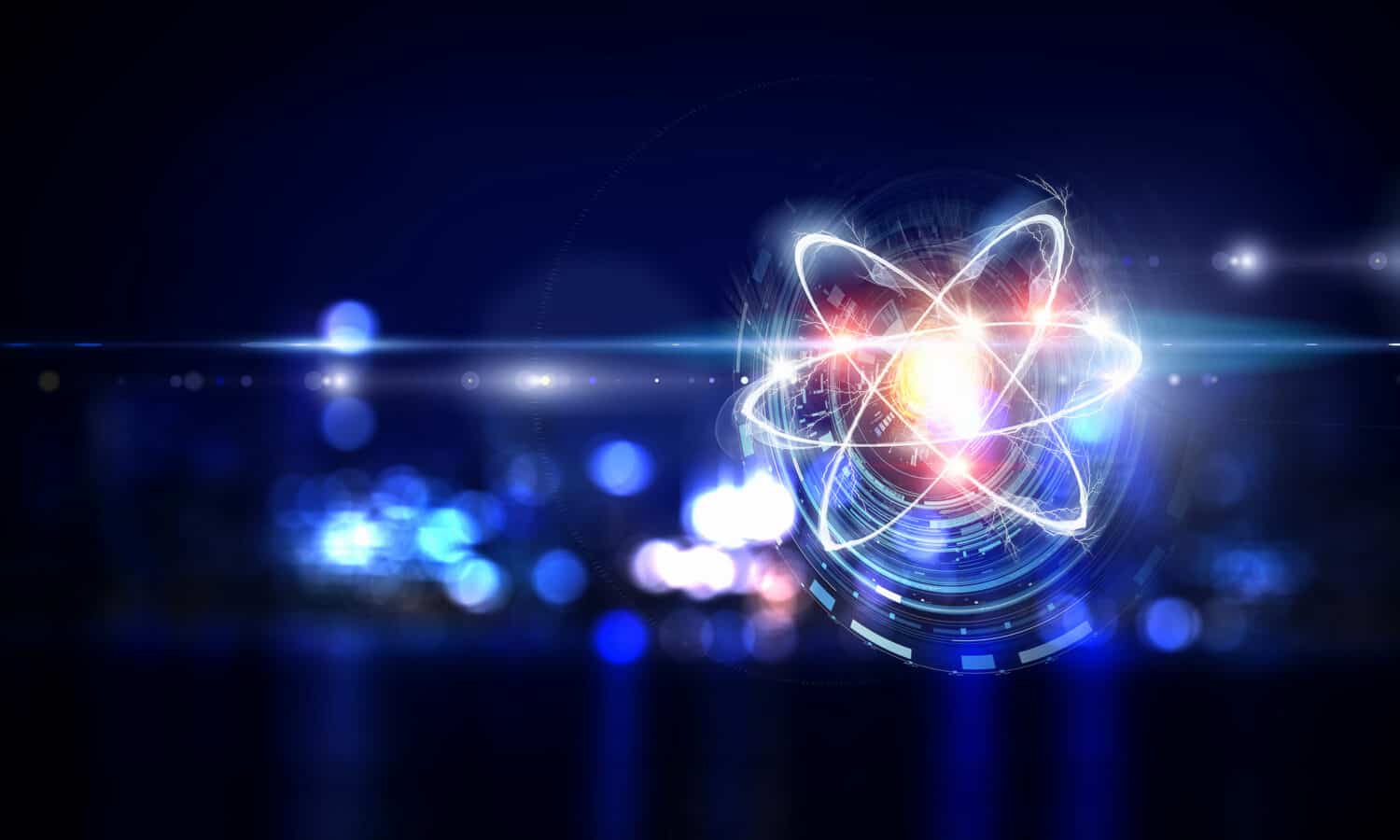
Science museums are a blast to visit. There is always something interactive displayed, and sometimes the exhibits even change! There are thousands of science museums to explore in the U.S. , so how do you choose just a few to visit? To make it easier, we've listed the 6 best science museums in America.
Love Animals as much as we do? Make sure to Follow and Like us on MSN. Have feedback? Add a comment below!
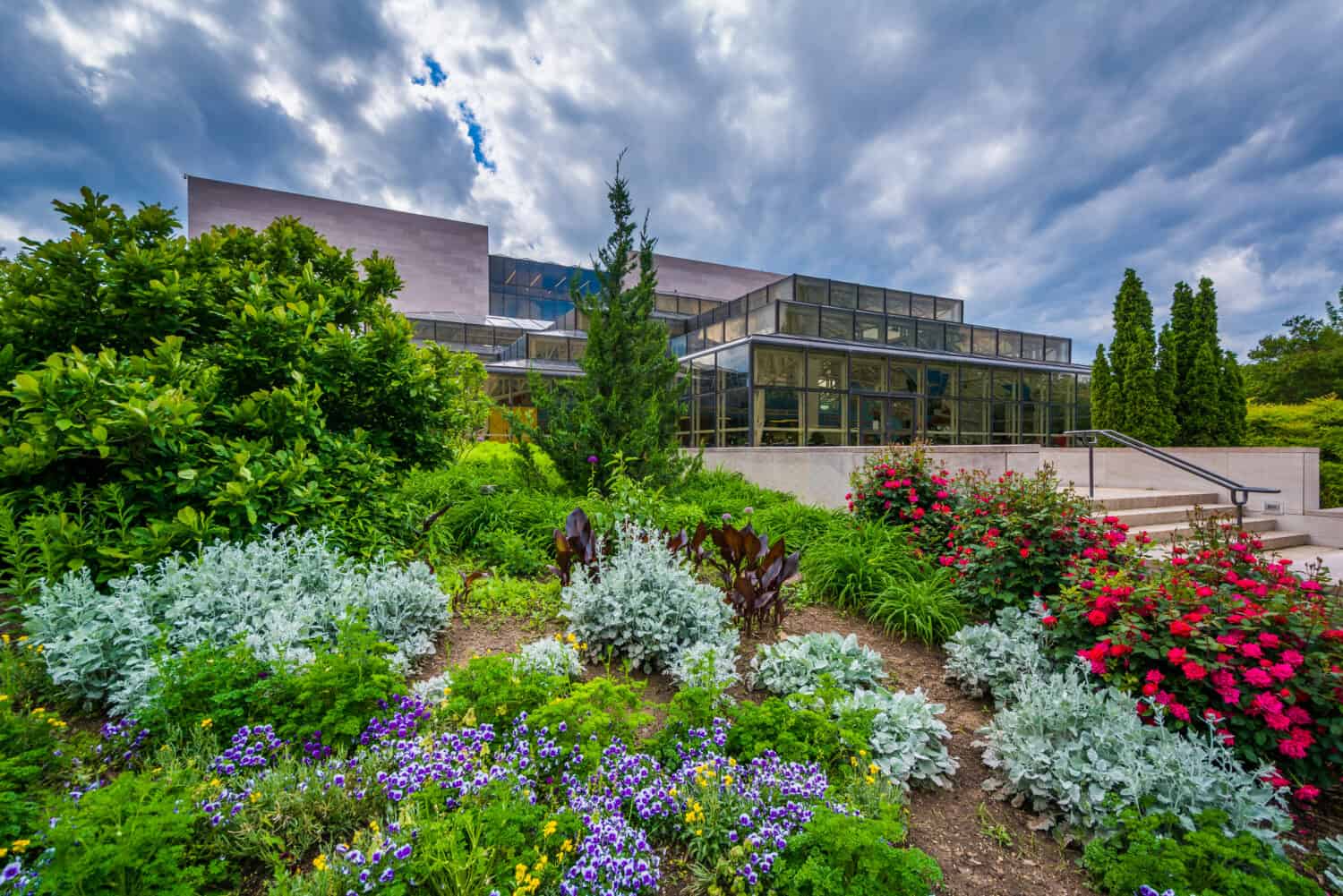
Smithsonian National Air and Space Museum
The first science museum on our list is constantly talked about. The Smithsonian National Air and Space Museum in Washington D.C. is a real treat to visit. It's free and was established in 1946. This highly-rated science museum can take days to explore. Interestingly, although it's one museum, it's located in two buildings. The first building, located on the National Mall, is open every day except for Christmas from 10 am to 5:30 pm. While here, you can see exhibits like Destination Moon, America by Air, Early Flight, and The Wright Brothers & The Invention of the Aerial Age.
The second building of this museum is the Steven F. Udvar-Hazy Center in Virginia . Although free to enter, there is a parking fee. The hours are the same as the first building. The exhibitions include Interwar Military Aviation, General Aviation, and Cold War Aviation.
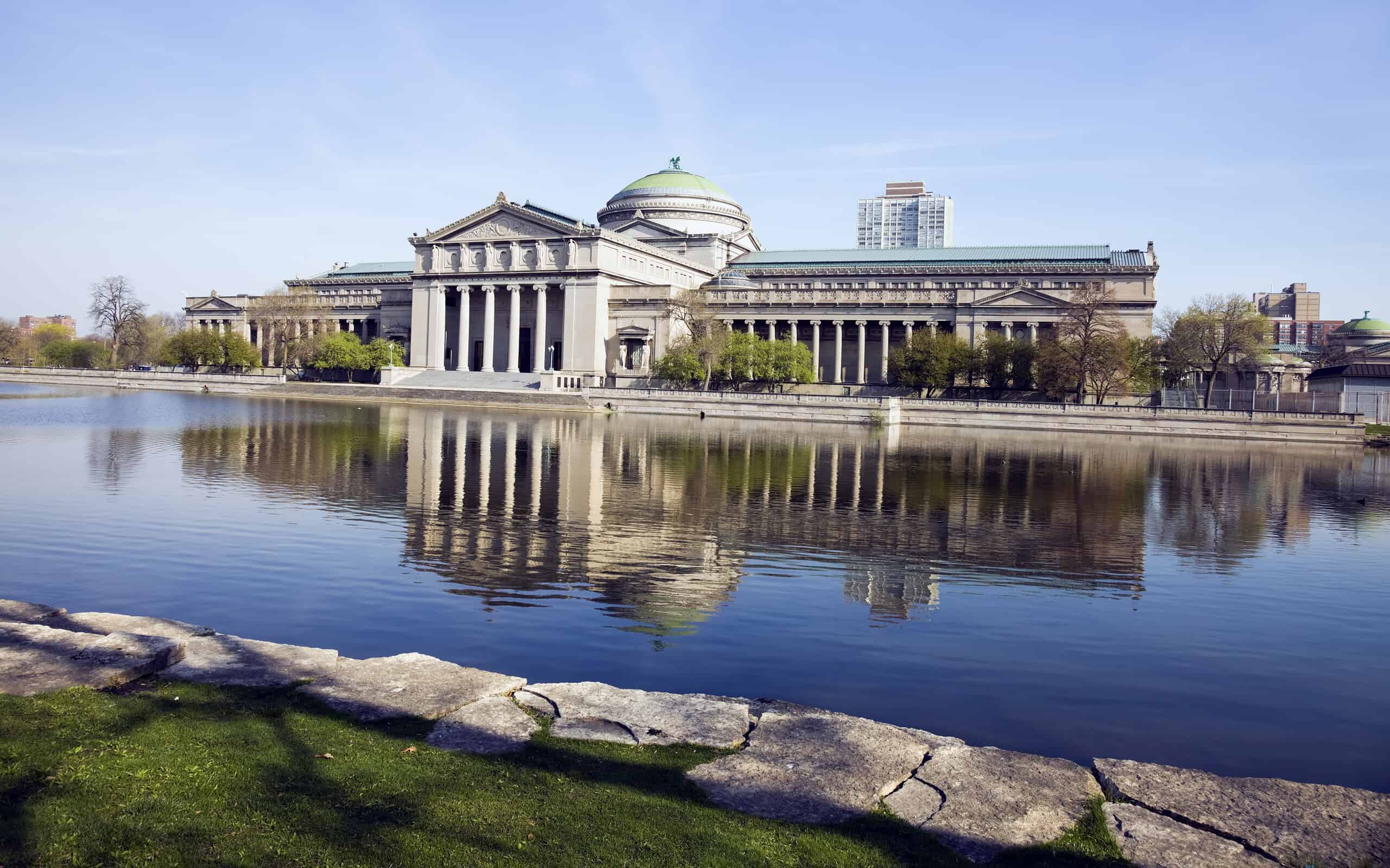
The Museum of Science and Industry (Chicago)
Moving to Illinois , another great American science museum is the Museum of Science and Industry (Chicago) . This wonderful museum is located in Jackson Park. It was established in 1933 and receives over 1.5 million visitors a year. This popular museum is home to many interactive and immersive exhibits. Some of the exhibits you may find in the Museum of Science and Industry (Chicago) are The Blue Paradox, Coal Mine, Extreme Ice, Colleen Moore's Fairy Castle, Yesterday's Main Street, and Numbers in Nature: A Mirror Maze.
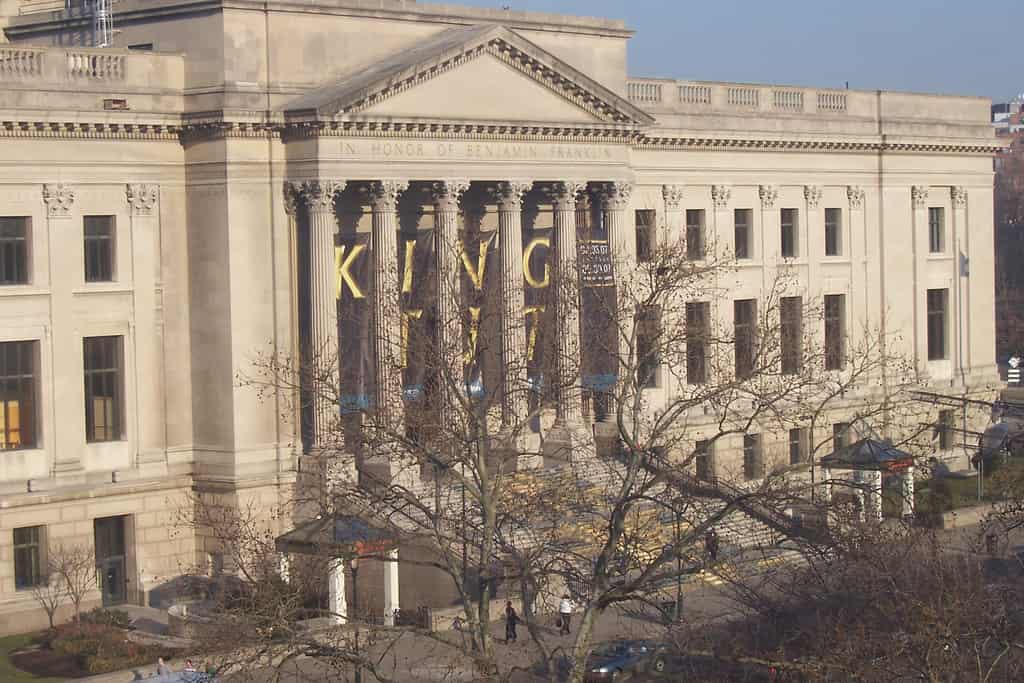
The Franklin Institute
Continuing our list of the best science museums in America is the Franklin Institute in Philadelphia, Pennsylvania . This unforgettable science museum has a little bit of everything. Apart from exciting exhibits, the Franklin Institute also has a planetarium, Fels Planetarium, and an observatory, The Holt & Miller Observatory. So, what are the exhibits offered by this science museum? While visiting, you can interact with exhibits like the Giant Heart, Franklin Air Show, and Wondrous Space. Wondrous Space is a newer exhibit with two floors to explore.
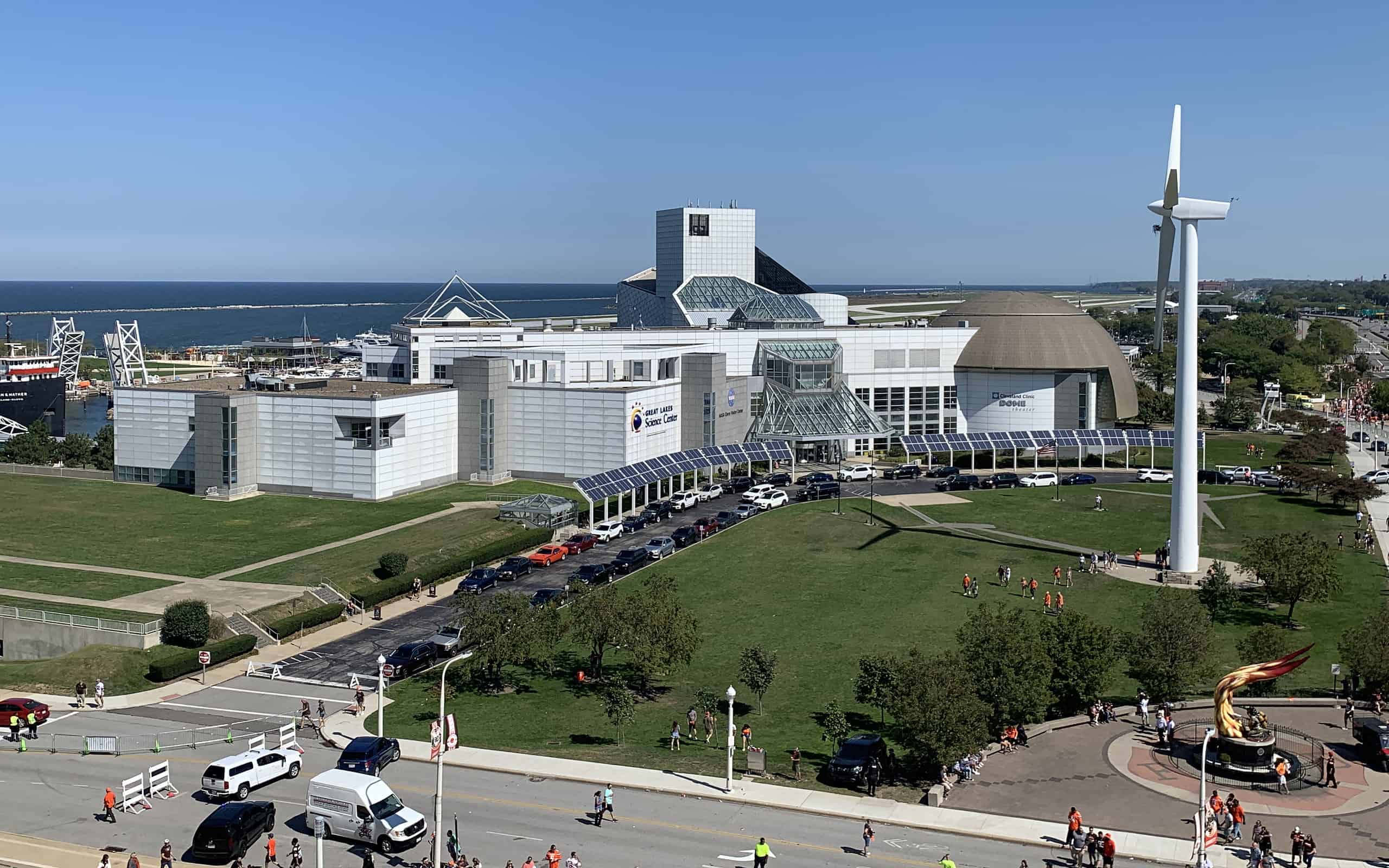
Great Lakes Science Center
In Downtown Cleveland, Ohio , you can find the Great Lakes Science Center. It was established in 1996 and sits on the shore of Lake Erie. While visiting the Great Lakes Science Center, you won't run out of things to see. A popular spot in this science center is the Cleveland Clinic DOME Theater. This massive theater plays films like "Sea Lions: Life By a Whisker" and "The Arctic: Our Last Great Wilderness". Also in this science center are hundreds of interactive exhibits. A few of these exhibits are the NASA Glenn Visitor Center, Solarworks, and the restored William G. Mather Steamship.
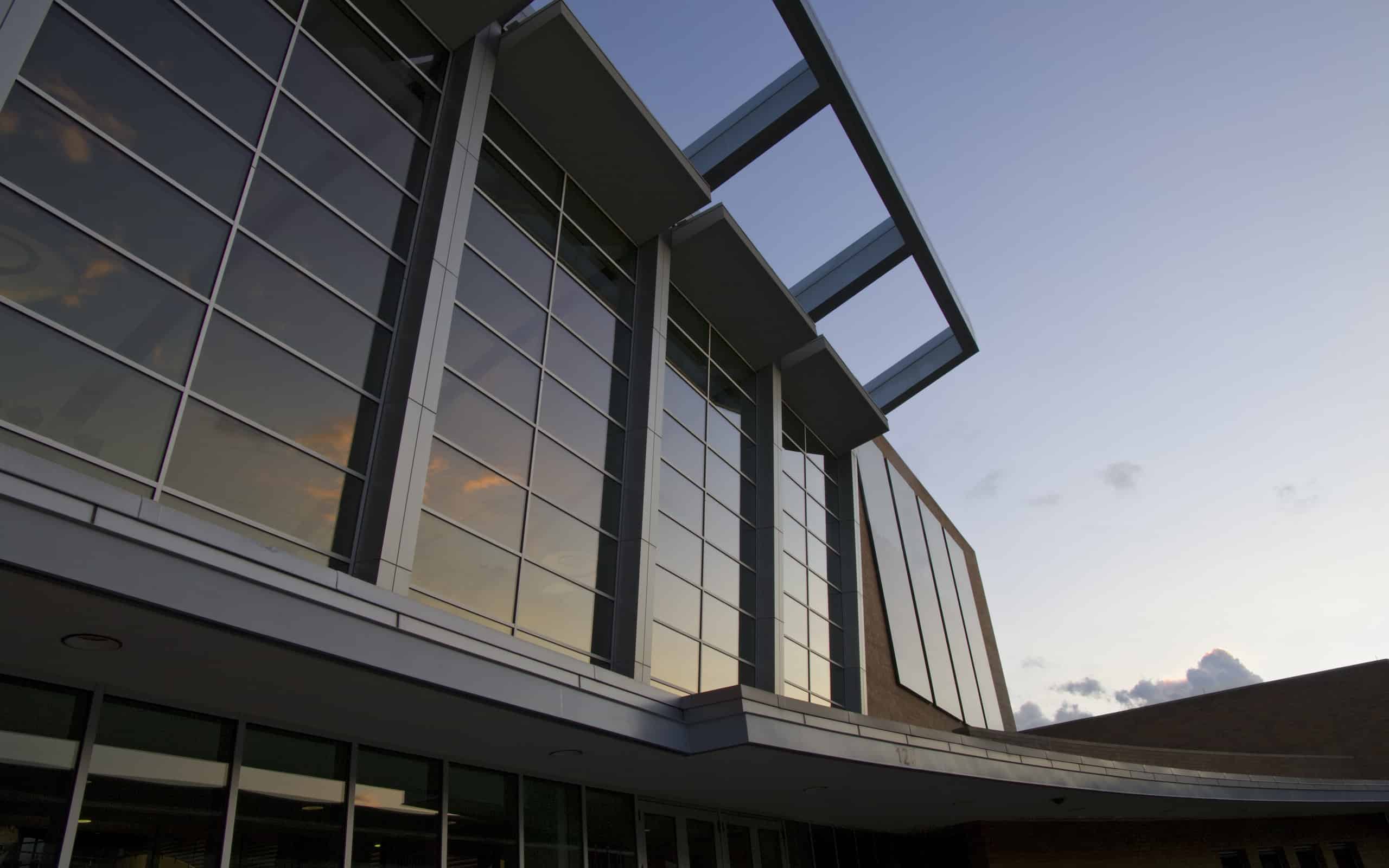
The Science Museum of Minnesota
The next science museum on our list is located in Minnesota . The Science Museum of Minnesota greets hundreds of thousands of visitors a year. It was first founded in 1907 and has come a long way since then. Not only does this lovely museum house incredible exhibits, but it also hosts events like Museum Nights, the Member Lounge, Sensory Friendly Sundays, and STEM Saturdays. Countless temporary exhibits are frequently replaced with unique collections and activities. Permanent exhibits though include the Collectors' Corner, Giant Astronaut, Human Body Gallery, Dinosaurs & Fossils Gallery, and Math Moves.
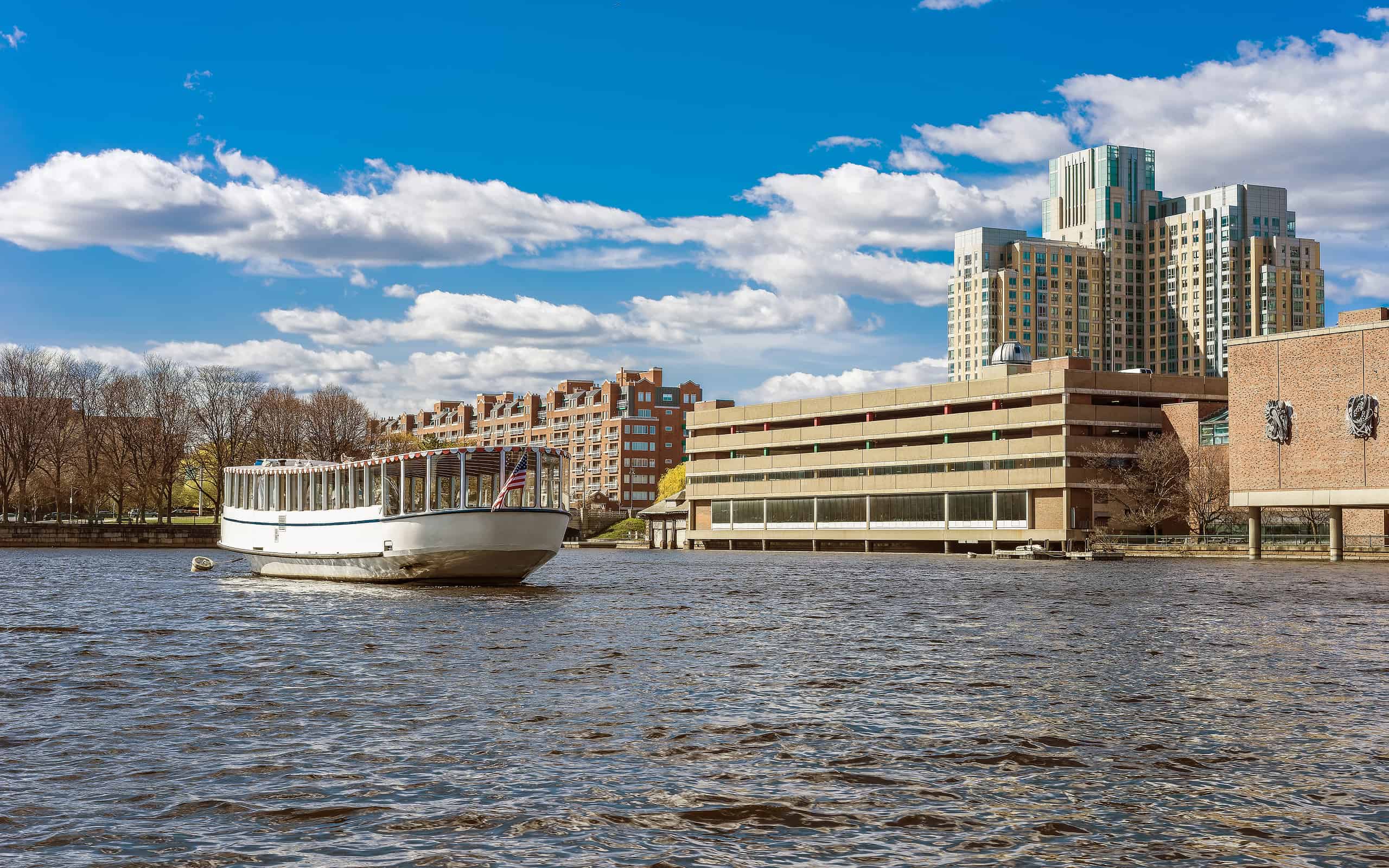
The Museum of Science (Boston)
Although in no particular order, ending our list is the Museum of Science in Boston . It's a favorite for many due to its large and impressive exhibits. Like other museums on our list, one day may not be enough time to see and do everything. The Museum of Science (Boston) is an exciting experience. On the same day, visitors can fly a virtual drone, explore A.I., learn about the human body, discover dinosaur fossils, and walk through an insect zoo. The Museum of Science (Boston) also features the Charles Hayden Planetarium where you can experience vibrant shows. Live presentations are also held throughout the museum like Live Animal Story Time, Tesla Coils, and the Amazing Nano Brothers Juggling Show.
Can't make it to this museum physically? There are plenty of virtual exhibits to explore. Some of these include Sounds of the Arctic, the Science Behind Pixar, and Bird Flight Patterns.
- Discover the Best Museums in the US
- 5 Best Museums in Texas (Including Must-See Exhibits)
- 10 Best Museums in California (Including Must-See Exhibits)
More for You
Analyst makes bold claims about Russell Wilson's struggles with Broncos: 'All the play calls had to be two words'
I was fired from a new job in less than a week after I started. It taught me not every opportunity is a good opportunity.
19 Things People Treat As Safe That Actually Are Pretty Dangerous
Zelenskyy outlines what is restraining Putin from nuclear strike on Ukraine
Average US annual salary by age revealed – see how you compare
Who Is the Richest Person in the World? Top 10 People by Net Worth in 2024
Chris Brown Explains Why He Began Investing At Age 17, Which Led To Owning 14 Burger King Restaurants And More — ‘You Need An Exit Strategy’
Fever rookie Caitlin Clark stuns in WNBA debut before sellout crowd: 'You couldn’t ask for a better game'
17 People Shared Their Favorite "Poor Man's Meal," And I'm Definitely Gonna Try Some Of These
The best lake towns to live in America all year round, according to data
Jif Is Releasing a New Flavor for the First Time in Nearly 10 Years
Rock Queens: Recognizing 25 Women Who Shaped the Music Industry
Archaeologists Find Rare Item Worth More to Romans Than Its Weight in Gold
How Much Beer You'd Have To Drink To Equal A Single Shot Of Liquor
3 underrated Netflix shows you should watch this weekend (May 3-5)
I Cut My Food Expenses In Half Using The Viral "6-To-1" Grocery Method — Here's How
Maher torches Biden's student loan handout: 'My tax dollars are supporting this Jew hating? I don't think so!'
McDonald's Is Going To Release Its Biggest Burger Ever
A woman said her tattoos got her rejected for a job, but experts say personality is far more important
Boston Red Sox legend calls Stephen A. Smith a racist, claims he was banned from Philadelphia Phillies clubhouse
The Louvre Is Thinking About Moving the ‘Mona Lisa’ to Its Own Room Underground
Officials hope to improve visitors’ experience in the Paris museum’s Salle des États
/https://tf-cmsv2-smithsonianmag-media.s3.amazonaws.com/accounts/headshot/Sonja_headshot.png)
Sonja Anderson
Daily Correspondent
:focal(1816x1366:1817x1367)/https://tf-cmsv2-smithsonianmag-media.s3.amazonaws.com/filer_public/90/25/9025858e-28e7-432b-94ac-b4c1f625429c/gettyimages-1220879035.jpeg)
Every year, millions of people see Leonardo da Vinci’s Mona Lisa at the Louvre. But many of those who’ve crowded around the small painting—visible through bulletproof glass in the Paris museum’s Salle des États —recently expressed their distaste for the viewing experience in a survey, calling it “torture” and saying they’ve “never been so disappointed.”
To curb such discontent, museum director Laurence des Cars has suggested moving Leonardo’s enigmatic portrait to its own subterranean room.
“We don’t welcome visitors very well in [the Salle des États], so we feel we’re not doing our job properly,” des Cars said at a recent management seminar, per the Telegraph ’s Henry Samuel. “Moving the Mona Lisa to a separate room could put an end to public disappointment.”
Painted in the early 1500s, the Mona Lisa is Renaissance artist Leonardo’s best-known work—and perhaps the world’s most famous painting. It arrived at the Louvre in 1804. Today, the work draws 80 percent of the museum’s nine million annual visitors, per the Telegraph . Some days, as many as 25,000 people step up to see the portrait—and on average, each one gets just 50 seconds to admire it in the “perpetually crammed” Salle des États, as the London Times ’ David Chazan and Laura Freeman write.
For these reasons, surveyed museumgoers have dubbed the Mona Lisa “the world’s most disappointing masterpiece,” according to a new report from CouponBirds , a website that helps consumers find discount codes. After analyzing more than 18,000 visitor reviews mentioning the work, the company found that nearly 40 percent of comments were negative.
/https://tf-cmsv2-smithsonianmag-media.s3.amazonaws.com/filer_public/1c/f9/1cf9195d-2ca9-413d-8e54-7f9a7253e6f3/crowd_looking_at_the_mona_lisa_at_the_louvre.jpeg)
The oil portrait measures just 30 by 21 inches. Despite its small size, barriers and staff keep viewers at a distance—security measures that took on new relevance after protesters threw soup at the painting in January. Some visitors persist through the viewing crowd to gain the nearest possible audience with the Mona Lisa , but most “turn their backs to snap a selfie in front of the portrait before the guards move them on,” writes the Times .
“Leonardo da Vinci wanted to establish a face-to-face relationship between the painting and the person contemplating it,” Vincent Delieuvin , the Louvre’s chief curator of 16th-century Italian painting, tells Le Figaro ’s Claire Bommelaer, per a translation from the Telegraph . However, the artist’s intention is thwarted by the portrait’s current setup in the Salle des États. “It’s a large room, and the Mona Lisa is at the back, behind its security glass, so at first glance it looks like a postage stamp,” Delieuvin adds.
The museum has made other attempts to improve the Mona Lisa ’s display, including repainting the hall and streamlining the queuing system several years ago. But the viewing experience “didn’t really get a lot better for tourists,” Delieuvin tells Le Figaro , per a translation from the London Times . Museum leadership has been considering moving the painting for “a long time”—and now, “everyone is in agreement.”
Per the proposal by des Cars, a new underground room would be built to house the portrait as part of a larger renovation effort. The director noted that the piece’s relocation would create more space in the Salle des États, returning coherence to its collection of Venetian works, some of which are often obscured by selfie sticks.
“The mood in the museum is now ripe,” des Cars said. “We have to embrace the painting’s status as a global icon, which is beyond our control.”
Get the latest stories in your inbox every weekday.
/https://tf-cmsv2-smithsonianmag-media.s3.amazonaws.com/accounts/headshot/Sonja_headshot.png)
Sonja Anderson | READ MORE
Sonja Anderson is a writer and reporter based in New York City.
- Share full article
Advertisement
Supported by
A Guide of American Museums to Visit This Year
Siblings, parents and grandparents are collaborators and muses in a variety of upcoming shows around the country that highlight family traditions and bonds.

By Aodhan Beirne
This article is part of our Museums special section about how institutions are striving to offer their visitors more to see, do and feel.
The value of family in the lives and work of artists is being showcased at museums across the United States this spring.
In Texas, art by the de la Torre brothers and the Haas brothers highlights familial collaboration. In Baltimore, an exhibition of works by Joyce J. Scott is paired with an exhibition of her mother’s work, and in Florida, sculptures made by Rose B. Simpson are shown alongside those made by her mother, grandmother and great-grandmother. Elsewhere, family members serve as muses for artists, keeping traditions alive while transforming them with contemporary appeal. Here is a selection.
“ Steve McQueen ”
For a new commission, Steve McQueen, the Oscar-winning director of “12 Years a Slave,” takes over the ground-level gallery with an immersive light and sound installation. The work is to then move to the Schaulager museum in Switzerland. A concurrent show of McQueen’s video artwork “Sunshine State” (2022) is scheduled to open at Dia Chelsea in Manhattan in September. Opens May 12; Dia Beacon, diaart.org
“ Before and After Again ”
The work in this show is a response to the killing of 10 Black people in a mass shooting at a Buffalo grocery store in May 2022. The artwork, poetry and prose by the Buffalo-based artists and producers Julia Bottoms, Tiffany Gaines and Jillian Hanesworth in the exhibition were created in dialogue with people affected by the attack, and they honor the contributions to the community of those who were murdered. Through Sept. 30; Buffalo AKG Art Museum, buffaloakg.org
NEW YORK CITY
“ Amalia Mesa-Bains: Archaeology of Memory ”
A trailblazer in Chicano art, Amalia Mesa-Bains is known for her reimagining of traditional Mexican altars and offerings and her presentations of Mexican American women’s spirituality. Presented are more than 40 works, including Mesa-Bains’s large-scale “altar-installations.” Her multipart “Venus Envy” series of installations is being shown together in its entirety for the first time here. May 2 through Aug. 11; El Museo del Barrio, elmuseo.org
“ Crafting Modernity: Design in Latin America, 1940-1980 ”
The focus here is on six Latin American countries that led the development of modern domestic design in the region: Argentina, Brazil, Chile, Colombia, Mexico and Venezuela. With more than 100 objects, which include furniture, ceramics and textiles, this show examines how design provides context and understanding for the political, social and cultural transformations of the period. Through Sept. 22; Museum of Modern Art, moma.org
“ Hiroshige’s 100 Famous Views of Edo (feat. Takashi Murakami) ”
In his series of colorful prints, Utagawa Hiroshige depicts 19th-century Edo, now known as Tokyo, through images of the city’s shrines, restaurants, aqueducts and more. The set is being displayed for the first time in nearly a quarter century and is accompanied by photos of modern-day Tokyo as well as fantastical paintings by the artist Takashi Murakami, who created the works in response to Hiroshige’s prints. Through Aug. 4; Brooklyn Museum, brooklynmuseum.org
“ Melissa Cody: Webbed Skies ”
A fourth-generation weaver, Melissa Cody uses long-established techniques, including with a Navajo loom, while incorporating elements of contemporary technology. Highlighted here are more than 30 weavings, including one produced especially for the exhibition, that reframe and reinvent traditions. Through Sept. 9; MoMA PS1, momaps1.org
“ Preservation in Progress: Picturing Immigration ”
This show takes visitors behind the scenes of restoration work of “The Bay and Harbor of New York,” an 1855 painting by Samuel Bell Waugh that depicts immigrants arriving to the city. Gary McGowan, a conservator, will be working on the painting in the gallery on Thursdays, Fridays and Saturdays. It opened on April 12, to coincide with the anniversary of the busiest day in Ellis Island history, when more than 11,000 immigrants were processed on April 17, 1907. Through Oct. 13; Museum of the City of New York, mcny.org
PORTLAND, Ore.
“ Future Now: Virtual Sneakers to Cutting-Edge Kicks ”
Showcasing nearly 60 designs that push the limits of what footwear can be, this exhibition includes sneakers made from mushroom leather and reclaimed ocean plastics, and shoes made for the metaverse. A mix of art, design and technology, it also features works by the architects Rem D. Koolhaas and Zaha Hadid, as well as designs made in collaboration with Rick Owens, Stella McCartney and more. Through Aug. 11; Portland Art Museum, portlandartmuseum.org
LOS ANGELES
“ Hollywoodland: Jewish Founders and the Making of a Movie Capital ”
Exploring the history of filmmaking in Los Angeles, this exhibition goes back to the early 20th century and explains how the city became the industry’s epicenter. It also highlights the contributions of the Jewish filmmakers who founded the Hollywood studio system. Opens May 19; Academy Museum of Motion Pictures, academymuseum.org
“ Simone Leigh ”
The work of the multimedia artist Simone Leigh examines Black female subjectivity, and much of it draws on traditions from Africa and across the African diaspora. This comprehensive survey presents works by her in ceramic, bronze, video and installation, and it features pieces from her 2022 Venice Biennale presentation. The exhibition is co-presented by LACMA and the California African American Museum in Los Angeles and on view at both. May 26 through Jan. 20, 2025; LACMA, lacma.org , California African American Museum, caamuseum.org.
PASADENA, Calif.
“ I Saw It: Francisco de Goya, Printmaker ”
The Spanish artist Francisco de Goya is considered by many to be both the last old master and the first modern one. Much of his early work focused on portraits of the aristocracy, but Goya was also a printmaker and often used the medium to depict and scrutinize Spanish culture. On view here are his four major print series, as well as works by artists who were inspired by Goya, including Pablo Picasso, Yinka Shonibare and Andy Warhol. Through Aug. 5; Norton Simon Museum, nortonsimon.org
SAN FRANCISCO
“ Irving Penn ”
For nearly 70 years, Irving Penn helped revolutionize fashion photography. Shown here are around 175 photographs by Penn, the longtime Vogue contributor, including documentary scenes, abstract nudes and celebrity portraits of Audrey Hepburn, Marlene Dietrich and more. Through July 21; de Young, famsf.org
“ Phoenix Kingdoms: The Last Splendor of China’s Bronze Age ”
Based on recent archaeological discoveries, this exhibition showcases the technological and artistic advancements of the Zeng and Chu states of Bronze Age China, kingdoms that preceded and were largely overshadowed in historical records by the Qin Empire. This is the final show in a trilogy at the Asian Art Museum and follows “Terracotta Warriors” and “Tomb Treasures: New Discoveries From China’s Han Dynasty.” Through July 22; Asian Art Museum, asianart.org
Mid-Atlantic
“ Joyce J. Scott: Walk a Mile in My Dreams ”
A retrospective of the 50-year career of the Baltimore-based contemporary artist, this show features more than 120 objects, including Scott’s sculpture, garments and prints, as well as performance footage and archival materials. Running through Sunday at the Baltimore Museum of Art is also a companion exhibition of works by Scott’s mother, “Eyewinkers, Tumbleturds, and Candlebugs: The Art of Elizabeth Talford Scott.” Through July 14; Baltimore Museum of Art, artbma.org
PHILADELPHIA
“ Mary Cassatt at Work ”
Mary Cassatt was a Pennsylvania-born Impressionist painter who spent much of her adult life in Paris and whose work often depicted the social and working lives of women. This exhibition, with more than 130 works, also looks at Cassatt’s own professional life, and it will present new information about the materials she used and her artistic process. May 18 through Sept. 8; Philadelphia Museum of Art, philamuseum.org
“ Everlasting Plastics ”
First shown at the Venice Biennale of Architecture in 2023, this show examines how plastics shape and degrade economies and environments. Through site-specific commissions by five artists, architects and designers, it also considers how our relationship with the materials has changed as well as their unknown impact on our future. Through July 21; Carnegie Museum of Art, carnegieart.org
WASHINGTON, D.C.
“ Revolutions: Art from the Hirshhorn Collection, 1860-1960 ”
To celebrate its 50th anniversary, the museum is presenting an exhibition that examines the cultural and artistic transformation during 100 years marked by increasing mechanization and scientific and philosophical development. The more than 200 artworks, shown mostly in chronological order, include pieces by Georgia O’Keeffe, Jackson Pollock, Joan Miró and Picasso. Through April 20, 2025; Hirshhorn Museum & Sculpture Garden, hirshhorn.si.edu
“ Christina Ramberg: A Retrospective ”
Christina Ramberg, part of a group of artists known as the Chicago Imagists, often depicted fragmented female bodies — hair, hands and, particularly, torsos — in her paintings. The 100 or so works shown here include some of those pieces as well as the experimental quilts that Ramberg made in the late 1980s during a break from painting. Through Aug. 11; Art Institute of Chicago, artic.edu
“ The United Colors of Robert Earl Paige ”
Though raised in Chicago’s South Side, Robert Paige helped bring West African designs into American homes in the 1970s with his Dakkabar collection of fabrics, which was carried by Sears. Six decades of his textile designs are shown here along with recent clay, painting, drawing and collage pieces that he made during a recent residency at the Hyde Park Art Center. Through Oct. 27; Hyde Park Art Center, hydeparkart.org
“ Virginia Jaramillo: Principle of Equivalence ”
The abstract artist Virginia Jaramillo draws on her studies of physics, science fiction, mythology and modernist design. Her paintings and handmade-paper works examine how we experience the physical world and offer alternative understandings through abstraction. This show, of more than 40 works, includes her “Curvilinear” series, as well as works made during a collaboration with the Dieu Donné papermill in New York. May 4 through Jan. 5, 2025; Museum of Contemporary Art Chicago, mcachicago.org
“ Korean Couture: Generations of Revolution ”
This exhibition, which features about 30 pieces, including 17th-century aristocratic garments, traces the history and transformation of Korean fashion. A combination of traditional Korean aesthetics with contemporary trends is shown through the work of designers such as André Kim, Lie Sang Bong and Lee Jean Youn. Sunday through Oct. 13; Cleveland Museum of Art, clevelandart.org
“ To My Friends at Horn: Keith Haring and Iowa City ”
In 1984 and 1989, Keith Haring made trips to Iowa City to visit Ernest Horn Elementary School. On the first, he conducted workshops with students in a three-day residency, and on the second he completed a mural at the school. That mural, “A Book Full of Fun,” is on loan here while the school is renovated. May 4 through Jan. 5, 2025; University of Iowa Stanley Museum of Art, stanleymuseum.uiowa.edu
Mountain West
“ Biophilia: Nature Reimagined ”
Biophilia is a theory suggesting that humans innately seek a connection with nature and other life-forms. This show, through more than 80 works, including by Iris van Herpen, Studio Gang and teamLab, reflects on that idea, particularly in the context of a digital and urban world. May 5 through Aug. 11; Denver Art Museum, denverartmuseum.org
New England
“ Beyond Brilliance: Jewelry Highlights from the Collection ”
Pulled from the museum’s collection, the more than 150 pieces in this exhibition cover thousands of years. Among the highlights are an ancient Egyptian broad-collar necklace and 20th-century designs by Tiffany & Company and Bulgari. The contemporary designers featured include Christian and Yasmin Hemmerle, Wallace Chan and Feng J. Opens May 18; Museum of Fine Arts, Boston; mfa.org
“ Firelei Báez ”
The work of Firelei Báez, a Dominican-born artist who lives and works in New York, examines and questions historical narratives, particularly about colonialism and the African diaspora. Her paintings, drawings and installations are informed by anthropology, geography, folklore and other disciplines. This show will feature about 40 works before it moves to Vancouver, British Columbia, and then to Des Moines. Through Sept. 2; Institute of Contemporary Art, icaboston.org
SALEM, Mass.
“ Ethiopia at the Crossroads ”
Covering nearly 2,000 years of Ethiopian art and culture, the more than 200 objects in this exhibition include painted religious icons, illuminated manuscripts and metalwork. These pieces are paired with works by contemporary artists, such as Wosene Worke Kosrof, Julie Mehretu and Helina Metaferia, to trace the artistic traditions of the East African nation to the present day. Through July 7; Peabody Essex Museum, pem.org
HARTFORD, Conn.
“ Styling Identities: Hair’s Tangled Histories ”
Done in collaboration with local hairstylists and other members of the Hartford community, this show tells the story of hair and its various meanings. Arranged in four thematic sections — dealing with issues of community, change, care and judgments — the exhibition includes works by Lee Krasner, Mickalene Thomas and Cindy Sherman, and it is drawn primarily from the museum’s collection. Braiders, barbers and other hairstylists will be on site to work on visitors’ hair as part of the exhibition. Through Aug. 11; Wadsworth Atheneum Museum of Art, thewadsworth.org
“ Truth Told Slant: Contemporary Photography ”
This exhibition takes its name from an Emily Dickinson poem ( “Tell all the truth but tell it slant” ) and features five emerging photographers who challenge traditional documentary photography practices. Instead of showing disinterested observation, they embrace their own subjectivity on subjects such as race, sexual orientation, globalization and environmental justice. Through Aug. 11; High Museum of Art, high.org
CHARLOTTE, N.C.
“ Shinichi Sawada: Agents of Clay ”
In the mountains of Shiga Prefecture, the Japanese ceramist Shinichi Sawada, who is autistic and mostly nonverbal, creates fantastical clay figures. Shown here are about 30 of his sculptures, which explore Japanese and Shigaraki pottery traditions. Saturday through Aug. 11; Mint Museum Randolph, mintmuseum.org
“ Lee Alexander McQueen & Ann Ray: Rendez-Vous ”
The fashion photographer Ann Ray had unparalleled access to the world of Alexander McQueen, the provocative British fashion designer who died in 2010. Over 13 years and 43 collections, Ray created an archive of more than 32,000 negatives. She picked 65 photographs, which will be shown alongside dozens of McQueen garments. May 30 through Aug. 25; Frist Art Museum, fristartmuseum.org
RALEIGH, N.C.
“ To Take Shape and Meaning: Form and Design in Contemporary American Indian Art ”
This show features works by 75 contemporary Indigenous artists from more than 50 tribes throughout the United States and Canada. The art, including a beaded pair of Christian Louboutin shoes and a piece created from a Chevrolet El Camino, highlight the traditions and evolutions of Native art. Through July 28; North Carolina Museum of Art, ncartmuseum.org
“ Huguette Caland: Outside the Line (1970-84) ”
The Lebanese artist Huguette Caland moved to Paris in 1970. There she created a series of paintings, “Bribes de corps” (Body Parts, 1973-76), shown here alongside associated works of hers. Her erotic and abstract art depicts the body, sometimes her own and often close-up, in colorful and intimate lines. May 3 through Oct. 6; Institute of Contemporary Art, Miami; icamiami.org
WEST PALM BEACH, Fla.
“ Rose B. Simpson: Journeys of Clay ”
A mixed-media sculpture artist, Rose B. Simpson comes from a long matrilineal line of ceramists and potters. This show explores the relationship between Simpson, a member of the Santa Clara Pueblo in New Mexico, and her relatives, and it features sculptures by her mother, Roxanne Swentzell; her grandmother Rina Swentzell; and her great-grandmother Rose Naranjo. Through Sept. 1; Norton Museum of Art, norton.org
“ Haas Brothers: Moonlight ”
Exhibited here are a series of installations, both indoors and outdoors, by the fraternal twins Nikolai and Simon Haas, who make imaginative and fantastical sculptural objects. Among the works will be two “Moon Towers,” tall, glowing sculptures inspired by the streetlamps of Austin, Texas, that will stand in front of the museum. May 11 through Aug. 25, Nasher Sculpture Center, nashersculpturecenter.org
“ Art and War in the Renaissance: The Battle of Pavia Tapestries ”
For the first time in the United States, the entire series of these seven large-scale tapestries will be shown. A celebration of the victory by Charles V, the Holy Roman Emperor, over King Francis I of France in the Italian War of 1521-1526, the tapestries provide insights into Renaissance history, technology and style. They will be shown alongside arms and armor from the period. June 16 through Sept. 15; Kimbell Art Museum, kimbellart.org
SAN ANTONIO
“ de la Torre Brothers: Upward Mobility "
The brothers Einar and Jamex de la Torre began collaborating in earnest in the 1990s and create maximalist and often satirical mixed-media art. Their influences include Catholic iconography, Aztec mythology and German expressionism, and this exhibition, across four galleries, features their glass sculpture, lenticular prints, video work and installations. Through Sept. 15; McNay Art Museum, mcnayart.org
“ Multiple Realities: Experimental Art in the Eastern Bloc, 1960s-1980s ”
Highlighted here is the creative experimentation of Eastern and Central European artists of the period in their efforts to circumvent and elude the restrictions and controls on how their work was made and circulated. Nearly 100 artists from East Germany, Poland, Czechoslovakia, Hungary, Romania and Yugoslavia are featured. Through Sept. 15; Phoenix Art Museum, phxart.org

IMAGES
COMMENTS
The safety and security of the Smithsonian's visitors, volunteers, staff, and collections is of the highest importance. As the nation's most beloved collection of museums and galleries, we work hard every day to ensure the preservation of our country's treasures for the enjoyment of generations to come. Please review our health and safety ...
Plan your Smithsonian visit. When you visit the Smithsonian, you're entering the world's largest museum complex, with approximately 157 million artifacts and specimens in its trust for the American people. Most of our museums are located in the Washington, D.C., area with two in New York City.
Despite what many people think, the Smithsonian isn't a single museum. Rather, it is a collection of world-class museums, galleries, gardens, and a zoo. With 11 sites clustered around the National Mall and six other museums and the National Zoo elsewhere in the Washington, DC, area, the Smithsonian's collection of knowledge centers serve as a treasure chest for visitors curious to learn ...
Top 10 Smithsonian Museums To Visit . Over the years, I've definitely developed a soft spot for certain museums. Here are my personal favorites (in no particular order). Smithsonian National Museum Of African Art. The African Art Museum is easy to miss. It's right behind The Castle in a small square building topped by a blue dome. Inside is ...
Smithsonian Natural History Museum - 10th St. and Constitution Ave. NW, Washington, D.C. At this family favorite museum, you will see a variety of artifacts including an 80-foot dinosaur skeleton, a life-size model of a blue whale, an enormous prehistoric white shark, and a 45-and-a-half karat jewel a known as the Hope Diamond.
The Smithsonian Institution includes 21 museums plus the National Zoo making it the largest museum, education, and research complex in the world. Most of the museums are on the National Mall in Washington, DC plus two in New York City and one in Chantilly, VA. So, it's going to require some time to visit everything!
There are 19 museums and attractions that are part of the Smithsonian Institution, from the National Zoo in northern Washington D.C. to the Cooper Hewitt Design Museum in Manhattan. Most of them ...
Freer Gallery of Art and the Arthur M. Sackler Gallery (AKA the National Museum of Asian Art) 1050 Independence Ave, SW. Hours of Operation: 10:00 am to 5:30 pm daily (except December 25) Heading southwest from the Smithsonian Castle, this guide to the Smithsonian takes you to the Freer and Sackler Galleries of Art.
Planning your visit to the Natural History Museum. The Smithsonian National Museum of Natural History opened in 1910 to invoke discovery and education of the natural world. Its green dome and immense size (comparable to 18 football fields) are signatures, as well as the 140 million-plus natural science specimens and cultural artifacts that the museum contains.
The Renwick Gallery of the Smithsonian American Art Museum. Hours: 10:00 AM-5:30 PM daily, closed on December 25th. The Renwick Gallery exhibits American decorative and contemporary arts and crafts from the 19 th through the 21 st centuries. It's currently closed to the public because of a two-year renovation project.
Top 18 things you must see at the American History Museum in Washington, D.C. including Dorothy's Ruby Slippers, the Star-Spangled Banner, Abraham Lincoln's Top Hat, and more. ... The Smithsonian National Museum of American History in Washington D.C. is one of the best museums we've been to encapsulating the essence of American history ...
Museums are closing their doors amid the coronavirus crisis, but many offer digital exhibitions visitors can browse from the comfort of home. The Vatican Museums (pictured here), the Anne Frank ...
History. Construction of the National Museum of American History began in the late 1950s. The National Museum of American History opened to the public in January 1964 as the Museum of History and Technology. It was the sixth Smithsonian building on the National Mall in Washington, D.C. Since then, some 4 million visitors a year have passed ...
Welcome. The Smithsonian Institution is the world's largest museum, education, and research complex. We are a community of learning and an opener of doors. Join us on a voyage of discovery. Explore our vast digital resources and learn online.
Collection of the Smithsonian National Museum of African American History and Culture. The Freedmen's Bureau (detail), illustration by A.R. Waud. Published in Harper's Weekly, July 25, 1868. Collection of the Smithsonian National Museum of African American History and Culture, Stanley Turkel's Collection of Reconstruction Era Materials.
The Smithsonian American Art Museum has announced the appointment of 18 fellows for the 2024-2025 academic year. The museum's program hosts fellows appointed by the Smithsonian's Office of Academic Appointments and Internships and grants its own awards for scholars and students to pursue research at the museum, including graduate, predoctoral, postdoctoral and senior fellowships.
The Smithsonian National Air and Space Museum in Washington D.C. is a real treat to visit. It's free and was established in 1946. It's free and was established in 1946. This highly-rated science ...
Before the museum repainted the hall and added a guided queue in 2019, large crowds gathered freely around the famed portrait. Victor Grigas via Wikimedia Commons under CC BY-SA 4.0 The oil ...
It opened on April 12, to coincide with the anniversary of the busiest day in Ellis Island history, when more than 11,000 immigrants were processed on April 17, 1907. Through Oct. 13; Museum of ...